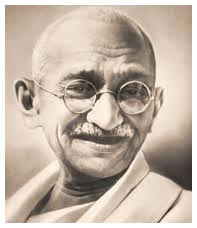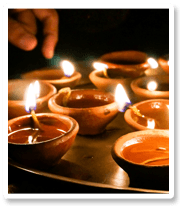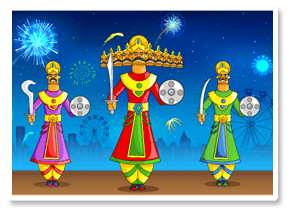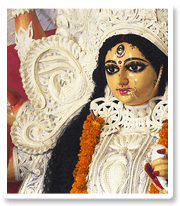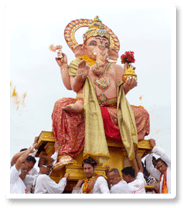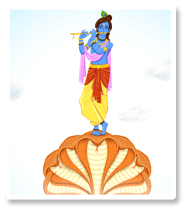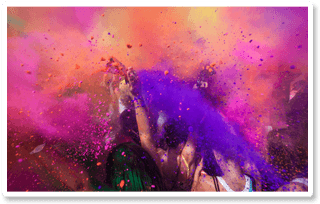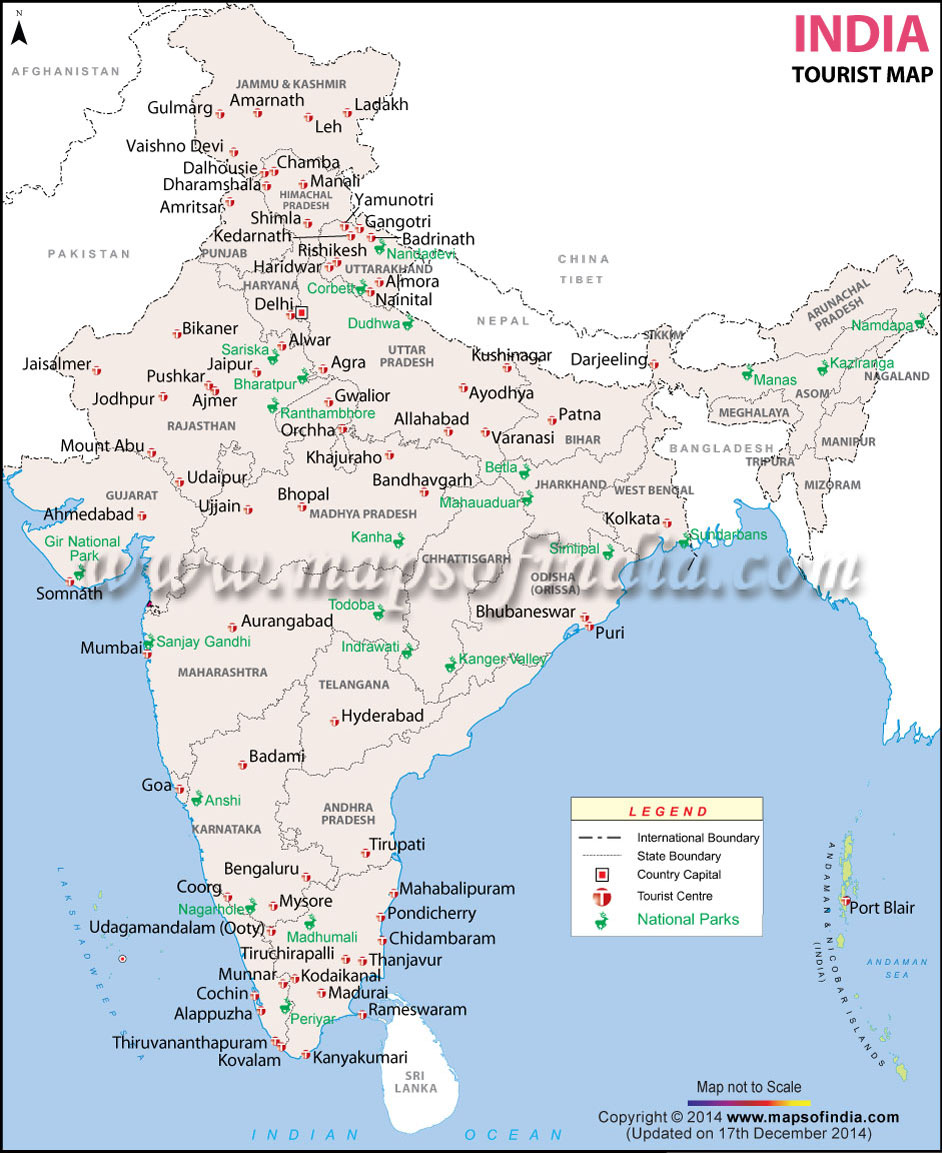
BharatBharat VarshaHindustan
India
AryavartaJambu Dweepa
Discovering the Wonder that is India
What is India and what is her identity? Is she as elusive to find as the insides of a seed? A mere country cannot assume the bewitching charms that hang on her slender wrists. So, how to encounter the real India?
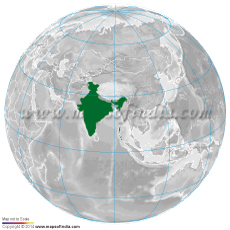 Sit by the ruins, and see the inscriptions carved on the walls of caves, and listen. Listen to the seers and the folklorists, to the waters of the perennial rivers and the echoes from the immortal gigantic mountains. Look at the personifications of prayer carved out of marble or stone, and lie under a banyan tree, and listen - Listen to India.
Sit by the ruins, and see the inscriptions carved on the walls of caves, and listen. Listen to the seers and the folklorists, to the waters of the perennial rivers and the echoes from the immortal gigantic mountains. Look at the personifications of prayer carved out of marble or stone, and lie under a banyan tree, and listen - Listen to India.
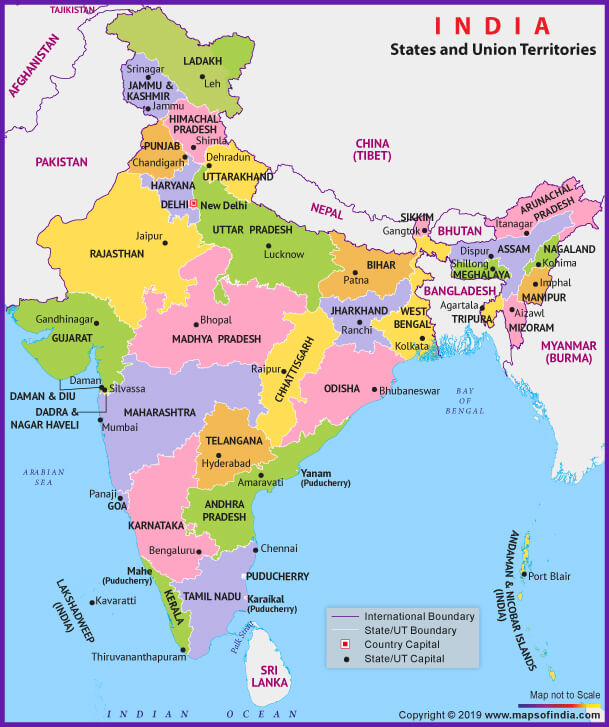 India is the name given to the vast peninsula which the continent of Asia throws out to the south of the magnificent mountain ranges that stretch in a sword like curve across the southern border of Tibet. Shaped like an irregular quadrilateral, this large expanse of territory we call India, deserves the name of a subcontinent. Ancient Geographers referred to India as being "constituted with a four-fold conformation" (chatuh samasthana samsthitam), "on its South and West and East is the Great Ocean, the Himavat range stretches along its north like the string of a bow".
India is the name given to the vast peninsula which the continent of Asia throws out to the south of the magnificent mountain ranges that stretch in a sword like curve across the southern border of Tibet. Shaped like an irregular quadrilateral, this large expanse of territory we call India, deserves the name of a subcontinent. Ancient Geographers referred to India as being "constituted with a four-fold conformation" (chatuh samasthana samsthitam), "on its South and West and East is the Great Ocean, the Himavat range stretches along its north like the string of a bow".
The name Himavat in the above passage refers not only to the snow-capped ranges of the Himalayas but also to their less elevated offshoots - the Patkai, Lushai and Chittagong Hills in the east, and the Sulaiman and Kirthar ranges in the west. These go down to the Sea and separate India from the wooded valley of Irrawady, on the one hand, and the hilly tableland of Iran, on the other. The Himalayas standing tall in breathtaking splendour are radiant in myth and mystery. These, the youngest and tallest mountain ranges, feed the Ganga with never-ending streams of snow. The Himalayas are home to the people of Kashmir, Himachal Pradesh, Uttaranchal, Sikkim and Arunachal Pradesh.
Indians love these peaks because they are a part of every Indian's life. Indians revere the mountains, as they would, the father. Even today, when urban India is racing against time, in the caves of the snow-clad peaks, live hermits - seeking the divine. Not a surprise when you consider that even this century has seen some great philosophers like Ramana Maharishi, Swami Vivekananda, Ramakrishna Paramhansa and J. Krishnamurti.
What is India and what is her identity? Is she as elusive to find as the insides of a seed? A mere country cannot assume the bewitching charms that hang on her slender wrists. So, how to encounter the real India?


The name Himavat in the above passage refers not only to the snow-capped ranges of the Himalayas but also to their less elevated offshoots - the Patkai, Lushai and Chittagong Hills in the east, and the Sulaiman and Kirthar ranges in the west. These go down to the Sea and separate India from the wooded valley of Irrawady, on the one hand, and the hilly tableland of Iran, on the other. The Himalayas standing tall in breathtaking splendour are radiant in myth and mystery. These, the youngest and tallest mountain ranges, feed the Ganga with never-ending streams of snow. The Himalayas are home to the people of Kashmir, Himachal Pradesh, Uttaranchal, Sikkim and Arunachal Pradesh.
Indians love these peaks because they are a part of every Indian's life. Indians revere the mountains, as they would, the father. Even today, when urban India is racing against time, in the caves of the snow-clad peaks, live hermits - seeking the divine. Not a surprise when you consider that even this century has seen some great philosophers like Ramana Maharishi, Swami Vivekananda, Ramakrishna Paramhansa and J. Krishnamurti.
| Official Name | Bharat, also known as Republic of India | Major Religions | Hinduism, Islam, Christianity, Sikhism, Buddhism, Jainism, Judaism, Zoroastrianism | |
| Capital | New Delhi | Number of States and Union Territories | 28 States and 8 Union Territories | |
| Population | 1,210,569,573 (2011 Census) | Time Zone (IST) | GMT plus 5.30 hrs | |
| Area | 3,287,263 square kilometers | President | Ram Nath Kovind | |
| Geographical Location | Between latitudes 8° 4' and 37° 6' North and longitudes 68° 7' and 97° 25' East | Vice President | Venkaiah Naidu | |
| Prime Minister | Narendra Modi | National Emblem | An adaptation of the Lion Capital of Emperor Ashoka at Sarnath | |
| National Anthem | Jana Gana Mana | Official Languages | Hindi, English | |
| National Song | Vande Mataram |
More Facts About India...
CURRENCY

(INDIAN RUPEE)
AQUATIC ANIMAL

RIVER DOLPHIN
FLOWER

LOTUS
FRUIT

MANGO
TREE

BANYAN
BIRD

INDIAN PEACOCK
LAND ANIMAL

TIGER
RIVER

GANGA OR GANGES
History of India - Celebrating India's Invincible Spirit
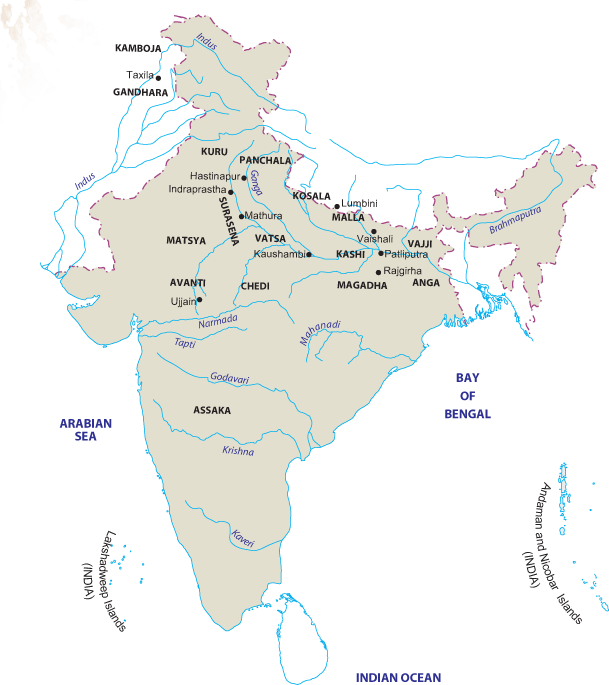
As the juggernaut of world history rolled on, many civilisations rose and fell and passed into oblivion but the spirit of India remains eternal and invincible, unscathed by the onslaught of Time. Indian history follows a continuous process of reinvention that can eventually prove elusive for those seeking to grasp its essential character. The history of this astonishing sub continent dates back to five thousand years ago, when the inhabitants of the Indus Valley Civilisation had developed an urban culture based on commerce and sustained by agricultural trade. Amongst the world's oldest, richest and most diverse cultures, India's unique ethos is rooted in its ethnic, cultural and religious diversity.
The political map of ancient and medieval India was made up of countless kingdoms with fluctuating boundaries that rendered the country vulnerable to foreign invasions. The Aryans were the first to invade the country. They came out of the North in about 1500 BC and brought with them strong cultural traditions. Persians, Greeks, Chinese nomads, Arabs, Portuguese, British and many others - the list of invaders who ruled India is long. Yet, none could crush the indomitable soul of Bharatvarsha!
Here is brief account of the History of India, which seeks to articulate the undying magic of the amazing nation that - in the words of American author Mark Twain - 'all men long to see, and having seen it once, would not give up that glimpse for all the wonders of the world'.
The political map of ancient and medieval India was made up of countless kingdoms with fluctuating boundaries that rendered the country vulnerable to foreign invasions. The Aryans were the first to invade the country. They came out of the North in about 1500 BC and brought with them strong cultural traditions. Persians, Greeks, Chinese nomads, Arabs, Portuguese, British and many others - the list of invaders who ruled India is long. Yet, none could crush the indomitable soul of Bharatvarsha!
Here is brief account of the History of India, which seeks to articulate the undying magic of the amazing nation that - in the words of American author Mark Twain - 'all men long to see, and having seen it once, would not give up that glimpse for all the wonders of the world'.

Ancient India
2500 BC
India's first major civilisation flourished around 2500 BC in the Indus river valley. This civilisation, which lasted for 1000 years, and is known as the Harappan culture, appears to have been the culmination of thousands of years of settlement. More...
.
1500 BC
From around 1500 BC onwards, Aryan tribes from Afghanistan and Central Asia began to filter into northwest India. Eventually these tribes were able to control the whole of Northern India, and many of the original inhabitants, the Dravidians, were pushed into south India.
7th century BC
As the Aryan tribes spread out across the Ganges plain, in the seventh century BC, many of them were grouped together into 16 major kingdoms.
5th century BC
Gradually these amalgamated into four large states, with Kosala and Magadha emerging to be the most powerful during the fifth century BC.
The Mauryas
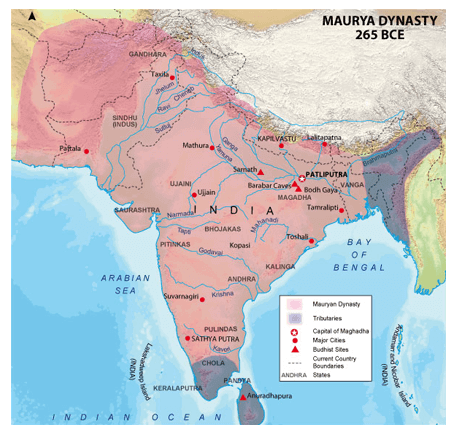 The Mauryas were the first ruling dynasty to control large parts of North India and some parts of South India, as one territorial unit.
The Mauryas were the first ruling dynasty to control large parts of North India and some parts of South India, as one territorial unit.
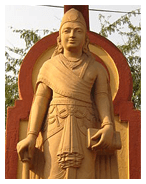
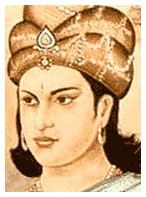 Following the decline of the Mauryan Empire, a number of powerful kingdoms arose in central and south India, among them Satavahanas, Kalingas and Vakatakas hold precedence. Later on these regions saw the rise of some of the greatest dynasties of South India in the form of the Cholas, Pandyas, Cheras, Chalukyas and Pallavas. The next dynasty worth a mention is that of the Guptas. Although the Gupta Empire was not as large as the Maurya Empire, it kept North India politically united for more than a century from AD 335 to 455. More...
Following the decline of the Mauryan Empire, a number of powerful kingdoms arose in central and south India, among them Satavahanas, Kalingas and Vakatakas hold precedence. Later on these regions saw the rise of some of the greatest dynasties of South India in the form of the Cholas, Pandyas, Cheras, Chalukyas and Pallavas. The next dynasty worth a mention is that of the Guptas. Although the Gupta Empire was not as large as the Maurya Empire, it kept North India politically united for more than a century from AD 335 to 455. More...


Chandragupta Maurya
Founded by Chandragupta Maurya with the able guidance of Kautilya, the author of the famous treatise - Arthshastra -

Ashoka
the empire reached its peak under Ashoka. He left pillars and rock-carved edicts, which delineate the enormous span of his territory that covered large areas of the Indian subcontinent.
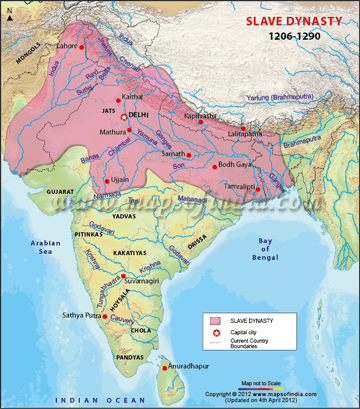
Medieval India
The decline of the Guptas in North India, and the consequent rise of a large but ineffective number of regional powers made the political situation very fluid and unstable by the ninth century AD. This paved the way for the Muslim invasion into India during the early half of the eleventh century.



These were felt in the form of 17 successive raids to North India, made by Mahmud of Ghazni between 1001 and 1025. These raids effectively shattered the balance of power in North India.

The next Muslim ruler to invade India Mohammad Ghauri attacked India and after some futile resistance by the local leadership he founded a foreign empire in India. Under him, large parts of India came under Muslim rule and very soon his successor Qutub-ud-din Aibak became the first of the sultans of Delhi.
His was followed by the rule of the Khaljis and Tughlaq, also known as the Delhi Sultanate, who ruled over a large portion of North India and parts of South India until the coming in of the Lodis and Sayyids. More...
Mughal Period
Defeating Lodis and Sayyids, the Mughals established, what came to be known as the most vibrant era of Indian History.
The most prominent rulers of the Mughal dynasty
The Mughal Empire was massive, covering, at its height, almost the entire Indian subcontinent. The Mughal emperors presided over a golden age of arts and literature and had a passion for
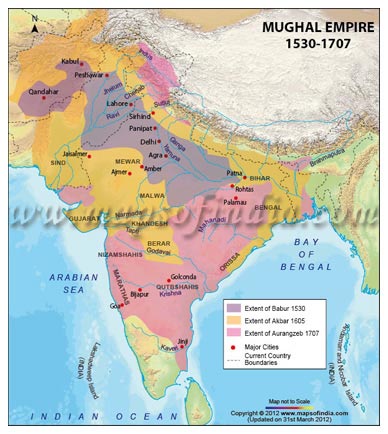
buildings, which resulted in some of the greatest architecture in India, like the Taj Mahal at Agra. This apart, the large number of forts, palaces, gates, buildings, mosques, baolis (water tank or well) gardens, etc, forms the cultural heritage of the Mughals in India. The Mughals were also instrumental in establishing one of the most efficient administrative setups in India.
The decline of the Mughals saw the corresponding rise of Marathas in Western India. In other parts of India, however, a new trend of foreign invasion under the garb of commercial links had started from the 15th century AD onwards - first, with the arrival and gradual takeover of Goa by the Portuguese led by Vasco da Gama - between 1498 and 1510 AD; and then with the arrival, and the setting up of the first trading post at Surat, in Gujarat, by the East India Company.
The Danes and Dutch also had trading posts, and in 1672 AD, the French established themselves at Pondicherry, an enclave that they held even after the British had departed. More...
The decline of the Mughals saw the corresponding rise of Marathas in Western India. In other parts of India, however, a new trend of foreign invasion under the garb of commercial links had started from the 15th century AD onwards - first, with the arrival and gradual takeover of Goa by the Portuguese led by Vasco da Gama - between 1498 and 1510 AD; and then with the arrival, and the setting up of the first trading post at Surat, in Gujarat, by the East India Company.
The Danes and Dutch also had trading posts, and in 1672 AD, the French established themselves at Pondicherry, an enclave that they held even after the British had departed. More...
British India
The British represented by the East India Company established their commercial control over vast areas in India, which very soon had an administrative dimension to it. The British rule in India was, however, formalised by the direct takeover of India by the British Crown, after the First War of Independence in 1857.
History of the Raj is one of constant struggle between the nationalists - who assumed different names, ideologies, backgrounds and methods - and the British and their repressive policies.
People from the length and breadth of India followed the path set by Mohandas Karamchand Gandhi, where truth and ahimsa or non-violence were held supreme. Strengthening this vision was the newly emerging intelligentsia. Raja Ram Mohan Roy, Bankim Chandra, Rabindranath Tagore, Subramanya Bharathi and Abul Kalam Azad were some of those who enthused people through their soul-stirring writings and songs to reach out to nationalism.
There were many who communicated directly with the masses. Bal Gangadhar Tilak, Asaf Ali, C. Rajagopalachari, Gopal Krishna Gokhale, Abdul Ghaffar Khan, Sardar Vallabhbhai Patel, Subhas Chandra Bose, Jawaharlal Nehru and Sarojini Naidu are some of the great names associated with the freedom struggle. More...
History of the Raj is one of constant struggle between the nationalists - who assumed different names, ideologies, backgrounds and methods - and the British and their repressive policies.
People from the length and breadth of India followed the path set by Mohandas Karamchand Gandhi, where truth and ahimsa or non-violence were held supreme. Strengthening this vision was the newly emerging intelligentsia. Raja Ram Mohan Roy, Bankim Chandra, Rabindranath Tagore, Subramanya Bharathi and Abul Kalam Azad were some of those who enthused people through their soul-stirring writings and songs to reach out to nationalism.
There were many who communicated directly with the masses. Bal Gangadhar Tilak, Asaf Ali, C. Rajagopalachari, Gopal Krishna Gokhale, Abdul Ghaffar Khan, Sardar Vallabhbhai Patel, Subhas Chandra Bose, Jawaharlal Nehru and Sarojini Naidu are some of the great names associated with the freedom struggle. More...
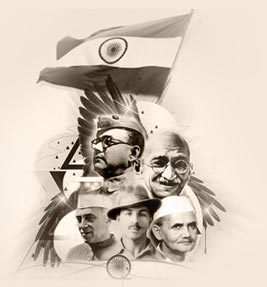
Jawaharlal Nehru became independent India's first Prime Minister and Rajendra Prasad the country's first President.
The Indian Constitution was drawn up in a matter of four years. It sought to assimilate different linguistic regions and religious communities of India into a cohesive Nation-State while, at the same time, conferring substantial autonomy upon the diverse states of the Indian Union.
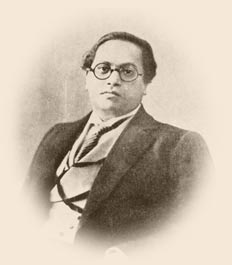
India embarked upon planning and began to address the issues like land reforms, improvement of agricultural marketing techniques and irrigation facilities. Reducing dependency on the fickle monsoons was a major priority area since most of Indian agriculture is rain-fed.
All this required, in addition to planning, a good deal of research. Moving over to scientific research and development, India raised her agricultural production to a consistent growth rate of three percent per annum.
India after Independence
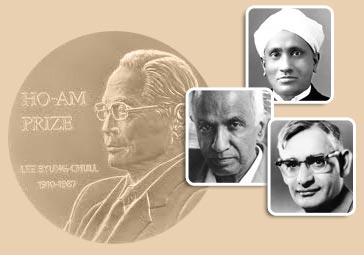 India started building a scientific foundation for all her programmes, whether it was agricultural research, pure scientific research or product designs for the craftsmen. If C. V. Raman, Subrahmanyan Chandrasekhar and Hargobind Khorana were recipients of the Nobel Prize, there were others with equal capabilities like Homi Bhabha, Shanti Swarup Bhatnagar, Jagdish Chandra Bose, Meghnad Saha Kothari, Krishnan, Vikram Sarabhai and Pal who concentrated their energies on creating the environment and infrastructure for further academic and developmental activities.
India started building a scientific foundation for all her programmes, whether it was agricultural research, pure scientific research or product designs for the craftsmen. If C. V. Raman, Subrahmanyan Chandrasekhar and Hargobind Khorana were recipients of the Nobel Prize, there were others with equal capabilities like Homi Bhabha, Shanti Swarup Bhatnagar, Jagdish Chandra Bose, Meghnad Saha Kothari, Krishnan, Vikram Sarabhai and Pal who concentrated their energies on creating the environment and infrastructure for further academic and developmental activities.
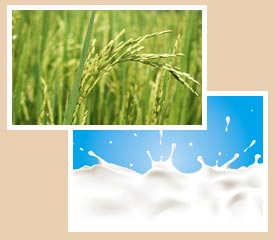 The 'Green Revolution' of the sixties and the 'White Revolution' of the seventies brought about amazing results in agriculture and cooperative dairy farming.
The 'Green Revolution' of the sixties and the 'White Revolution' of the seventies brought about amazing results in agriculture and cooperative dairy farming.
With the ninth-largest economy in the world by GDP and the third-largest by purchasing power parity (PPP), India is the second fastest growing economy in the world after China. From world class infrastructure, mega cities, economic hubs, modern airports, swanky multiplexes, thriving retail centres, plush hotels, to knowledge and information technology parks, the country has everything to illustrate its rapid strides on the fast trajectory of modernisation and holistic development.
Today, the country marches proudly as the second largest country in Asia and the seventh largest and second most populous country on Earth. India comprises as much as one third of Asia and supports one seventh of humanity. It has been recognised as the largest democracy of the world, and an emerging global power. More...


With the ninth-largest economy in the world by GDP and the third-largest by purchasing power parity (PPP), India is the second fastest growing economy in the world after China. From world class infrastructure, mega cities, economic hubs, modern airports, swanky multiplexes, thriving retail centres, plush hotels, to knowledge and information technology parks, the country has everything to illustrate its rapid strides on the fast trajectory of modernisation and holistic development.
Today, the country marches proudly as the second largest country in Asia and the seventh largest and second most populous country on Earth. India comprises as much as one third of Asia and supports one seventh of humanity. It has been recognised as the largest democracy of the world, and an emerging global power. More...
Geography : Location & Topography
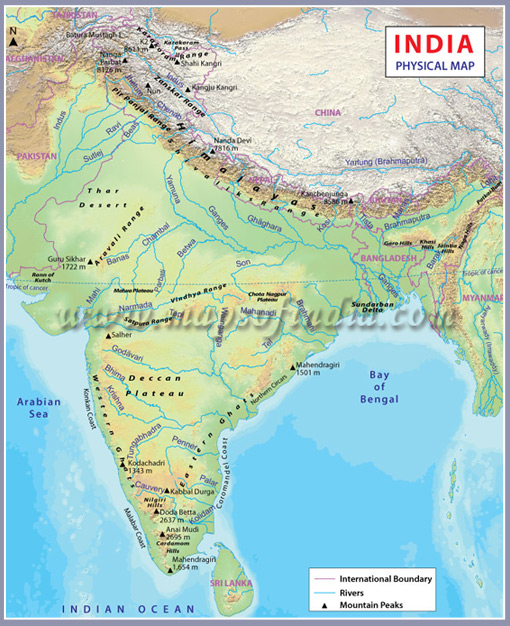

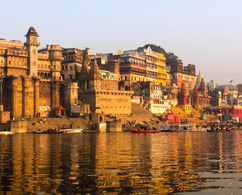 India is also fortunate in possessing a wide stretch of fertile lands, made up of the alluvial soil brought down in the form of fine silt by the mighty rivers. Lying south of the Himalayas, these Great North Indian Plains consist of the Indus basin, Ganga-Brahmaputra basin, and the tributaries of these mighty river systems.
India is also fortunate in possessing a wide stretch of fertile lands, made up of the alluvial soil brought down in the form of fine silt by the mighty rivers. Lying south of the Himalayas, these Great North Indian Plains consist of the Indus basin, Ganga-Brahmaputra basin, and the tributaries of these mighty river systems.
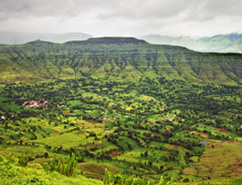 To the south of the Great Plains of Northern India lies the Great Plateau of Peninsular India, which is divided into three parts, namely the Malwa Plateau, the Chota Nagpur Plateau and the Deccan Plateau. The Malwa plateau bounded by the Aravalli hills and the Vindhyas form the northern half of this peninsula. The valley of the Narmada River forms the Southern boundary of this plateau. Chota Nagpur Plateau lies in the Eastern part of the peninsular and is the richest minerals producing region of India. The Deccan Plateau extends from the Satpura hills in the north to Kanyakumari in South.
To the south of the Great Plains of Northern India lies the Great Plateau of Peninsular India, which is divided into three parts, namely the Malwa Plateau, the Chota Nagpur Plateau and the Deccan Plateau. The Malwa plateau bounded by the Aravalli hills and the Vindhyas form the northern half of this peninsula. The valley of the Narmada River forms the Southern boundary of this plateau. Chota Nagpur Plateau lies in the Eastern part of the peninsular and is the richest minerals producing region of India. The Deccan Plateau extends from the Satpura hills in the north to Kanyakumari in South.
Towards the west of the Deccan Plateau lie the Western Ghats that comprise of the Sahyadri, the Nilgiri, the Annamalai and the Cardamom Hills. On the eastern side, this plateau merges into a layer of discontinuous low hills known as the Mahendra Giri hills, which comprise of the Eastern Ghats.
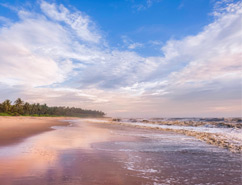 Narrow coastal plains along the Arabian Sea and the Bay of Bengal flank the Deccan Plateau on its eastern and western sides, respectively. The Western coastal plains lying between the Western Ghats and the Arabian Sea, further split into the Northern Konkan Coast and the Southern Malabar Coast. The Eastern coastal plains, on the other hand lie between the Eastern Ghats and the Bay of Bengal and like the Western plains are divided into two parts - the Coromandel Coast as the Southern part and the Northern Circars as the Northern part.
Narrow coastal plains along the Arabian Sea and the Bay of Bengal flank the Deccan Plateau on its eastern and western sides, respectively. The Western coastal plains lying between the Western Ghats and the Arabian Sea, further split into the Northern Konkan Coast and the Southern Malabar Coast. The Eastern coastal plains, on the other hand lie between the Eastern Ghats and the Bay of Bengal and like the Western plains are divided into two parts - the Coromandel Coast as the Southern part and the Northern Circars as the Northern part.
 Towards the Western half of India lies a vast stretch of land that is divided by the Aravalli Mountains into two separate units. The area to the west of the Aravalli comprises of the Thar Desert - made up of sand and interrupted by rocky hills and waterless valleys. This arid land extends deep into Pakistan. The state of Gujarat lies to the east of this range and is one of the most prosperous regions in India.
Towards the Western half of India lies a vast stretch of land that is divided by the Aravalli Mountains into two separate units. The area to the west of the Aravalli comprises of the Thar Desert - made up of sand and interrupted by rocky hills and waterless valleys. This arid land extends deep into Pakistan. The state of Gujarat lies to the east of this range and is one of the most prosperous regions in India.

Located in the Southern part of Asia, India lies between 8°4' and 37°6' N Latitude and 68°7' and 97°25' E Longitude. This seventh largest country in the world spreads over an area of 3,166,414 sq. km., including Lakshadweep Island in the Arabian Sea and the Andaman and Nicobar Islands in the Bay of Bengal. India is bounded by the Arabian Sea on its west and south west and the Bay of Bengal on its east and south east and the Himalayan Mountain ranges borders the country on its north. India shares its territorial border with Afghanistan, Pakistan, China, Nepal, Bhutan and Bangladesh.
India is blessed with diverse topography—from mountains to plains, to plateaus, deserts, coasts and islands. The Tropic of Cancer divides the country into two equal parts in the Northern and Southern part, and the Vindhya Mountains cut right across the country, from West to East.
The Himalayas, which forms the Northern boundary of the country, consist of three parallel series of mountain range: the Himadri, Himachal and Shivaliks.
India is blessed with diverse topography—from mountains to plains, to plateaus, deserts, coasts and islands. The Tropic of Cancer divides the country into two equal parts in the Northern and Southern part, and the Vindhya Mountains cut right across the country, from West to East.
The Himalayas, which forms the Northern boundary of the country, consist of three parallel series of mountain range: the Himadri, Himachal and Shivaliks.



Towards the west of the Deccan Plateau lie the Western Ghats that comprise of the Sahyadri, the Nilgiri, the Annamalai and the Cardamom Hills. On the eastern side, this plateau merges into a layer of discontinuous low hills known as the Mahendra Giri hills, which comprise of the Eastern Ghats.


India Maps
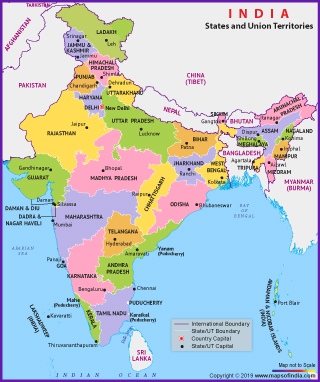 India is a vast country in the Southern portion of Asia which is bound by Indian Ocean on its south, Arabian Sea on its west and Bay of Bengal on its east and borders Pakistan, Nepal, Bhutan, China and Bangladesh on its north, northwest, northeast and east. Physical India maps can serve as effective tools for understanding the geophysical and topological features of the Indian sub-continent. An India outline map clearly defines the geopolitical outline of the country and India political map can help better understand the political boundaries and sub-divisions of the country for all practical purposes. In the physical map of India, earthquake prone regions (high risk) can be located as Himalayan region, parts of North Indian plains and parts of Gujarat. India has also witnessed some of the devastating earthquakes in these regions. India is an immense country with more than a billion population. India road map is an excellent tool for understanding the Indian transportation network, which includes an immense road network, covering almost whole of the sub-continent. However, Indian rail network and air travel network have emerged as virtual engines of economic growth in the modern times even while falling behind the road network in terms of geographical reach.
India is a vast country in the Southern portion of Asia which is bound by Indian Ocean on its south, Arabian Sea on its west and Bay of Bengal on its east and borders Pakistan, Nepal, Bhutan, China and Bangladesh on its north, northwest, northeast and east. Physical India maps can serve as effective tools for understanding the geophysical and topological features of the Indian sub-continent. An India outline map clearly defines the geopolitical outline of the country and India political map can help better understand the political boundaries and sub-divisions of the country for all practical purposes. In the physical map of India, earthquake prone regions (high risk) can be located as Himalayan region, parts of North Indian plains and parts of Gujarat. India has also witnessed some of the devastating earthquakes in these regions. India is an immense country with more than a billion population. India road map is an excellent tool for understanding the Indian transportation network, which includes an immense road network, covering almost whole of the sub-continent. However, Indian rail network and air travel network have emerged as virtual engines of economic growth in the modern times even while falling behind the road network in terms of geographical reach.

Culture of India
India, known for unity in diversity, offers an awesome, creative burst of culture - a potpourri of religions, races and languages. The roots of Indian culture and civilization can be traced back to more than 5,000 years ago with an unbroken continuity of traditions, customs and world-renowned schools of philosophy. Amongst the world's oldest, richest and most diverse cultures, India represents an amazing confluence of different creeds, religions, faiths and belief systems, further divided among castes, sects and sub-sects.
For times immemorial, India has remained a meeting ground between the East and the West, a treasure house of knowledge and wisdom. The Vedic culture and Vedic way of life have struck deep roots in India and are followed by people even today. Apart from the Vedas, other important scriptures composed during Vedic times include the Upanishadas (enlightening commentaries on the Vedas), the shrutis and the smritis (storehouses of heard and remembered erudition and learning).
India believes in Sarva dharma samabhava, which means respect for all belief systems. This has allowed not just tolerance towards religions and beliefs, but the freedom to propound one's ideas and philosophies.
 After assimilating and nurturing an incredible diversity of people and cultures for millennia, India culture remains an object of fascination for people the world over. The objects of ethnic interest like unique Indian dresses, delectable Indian food recipes, sonorous Indian music and exotic Indian names evoke global interest on a continuous basis. More...
After assimilating and nurturing an incredible diversity of people and cultures for millennia, India culture remains an object of fascination for people the world over. The objects of ethnic interest like unique Indian dresses, delectable Indian food recipes, sonorous Indian music and exotic Indian names evoke global interest on a continuous basis. More...
Religion In India, religion is not simply a belief system but a journey of self exploration. All the major religions of the world like Hinduism, Sikhism, Buddhism, Jainism, Islam and Christianity including their sects, are found and practised in India with complete freedom.
Religions have co-existed and evolved together for many centuries in the country and are very central to the lives of the people, who have a remarkable openness to even foreign religions. Judaism was one of the first foreign religions to arrive in India about 2500 years ago;
For times immemorial, India has remained a meeting ground between the East and the West, a treasure house of knowledge and wisdom. The Vedic culture and Vedic way of life have struck deep roots in India and are followed by people even today. Apart from the Vedas, other important scriptures composed during Vedic times include the Upanishadas (enlightening commentaries on the Vedas), the shrutis and the smritis (storehouses of heard and remembered erudition and learning).
India believes in Sarva dharma samabhava, which means respect for all belief systems. This has allowed not just tolerance towards religions and beliefs, but the freedom to propound one's ideas and philosophies.

Religion In India, religion is not simply a belief system but a journey of self exploration. All the major religions of the world like Hinduism, Sikhism, Buddhism, Jainism, Islam and Christianity including their sects, are found and practised in India with complete freedom.
Religions have co-existed and evolved together for many centuries in the country and are very central to the lives of the people, who have a remarkable openness to even foreign religions. Judaism was one of the first foreign religions to arrive in India about 2500 years ago;
Islam was spread across over a period of 700 years
Zoroastrianism arrived from Iran during the 8th or 10th century while the colonial rule introduced the country to Christianity.Lord Buddha was born in India and it is from the shores of this land that Buddhism was disseminated to Sri Lanka and to Tibet.As the gods and goddesses in their myriad forms were worshipped with elaborate rituals in the country, there appeared in the 15 century a reformer who enjoined a simpler form of worship, shorn of rituals. He was Guru Nanak Dev, whose teachings and those of the nine gurus who followed later are collected in the holy book of the Sikhs, the Guru Granth Sahib.
Christians are equally at home in India. Christian saints came to India many centuries ago and preached the doctrine of Christianity. It is believed that St Thomas, one of the twelve apostles of Christ, came to India in the first century AD, and spent the rest of his life in India preaching. His tomb, St Thomas Mount in Chennai, Tamil Nadu has become a place of pilgrimage for Christians in India. The Spanish Catholic missionary, St Francis Xavier, also spent the greater part of his life in Goa. His body, in a glass casket, has been kept in the Basilica of Bom Jesus in Panjim, Goa. Every ten years, his relics are exposed to the public, and people from all over the world throng Goa to receive the benediction. More...
Festivals
The tradition of celebrating festivals goes back to the Vedic period. The scriptures and works of literature of this era are replete with references to festivals. These were the celebrations in honour of gods, rivers, trees, mountains, and seasons like spring, and monsoon. These were the times for prayers and meditation, and also for spectacle and procession - occasions to express pure joy with performances comprising music, dance and drama, and conducting fairs.
The Constitution of India has guaranteed the freedom of worship and way of life to all its citizens. This has ensured the rich kaleidoscope of festivals that are celebrated throughout the country. More...
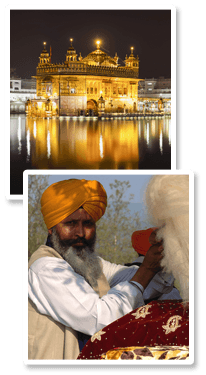 The festival of Eid is celebrated at the end of a month-long fasting. Christmas, commemoration of the birth of Jesus Christ, transcends the barriers of faith to become an occasion for celebration of joy across the country.
The festival of Eid is celebrated at the end of a month-long fasting. Christmas, commemoration of the birth of Jesus Christ, transcends the barriers of faith to become an occasion for celebration of joy across the country.
There are also numerous glittering fairs held in the country. The gem in the crown is, of course, the Kumbha Mela held at Haridwar, Prayag (Allahabad), Nashik and Ujjain. Pushkar Fair and Urs at Ajmer are some other famous examples. So are the Nauchandi mela, held on the second Sunday after Holi in Meerut; and Sonepur Cattle Fair - Asia's biggest cattle fair, held on Kartik Poornima in Bihar's Sonepur, on the confluence of river Ganges and Gandak.
The Constitution of India has guaranteed the freedom of worship and way of life to all its citizens. This has ensured the rich kaleidoscope of festivals that are celebrated throughout the country. More...
Diwali
The most colourful of all the festival is Deepawali or Diwali, the festival of lights. Rama, the central figure in the epic Ramayana, went into exile for 14 years, accompanied by his wife Sita and brother Lakshman. During their wanderings in the forests, Ravana, the king of Lanka, carried Sita away. It was only after an epic battle that Rama vanquished Ravana, rescued Sita and returned home. The journey from Lanka in the south to Ayodhya in the north took 20 days. His triumphal return brought great joy to his people who illuminated the whole city to celebrate the occasion. This tradition continues to this day as houses and cities throughout India are lit up every year (traditionally with small earthenware cups or diyas filled with oil) to commemorate the anniversary. Deepawali signifies the triumph of good over evil and light over darkness. More...
Dussehra
The battle between Ravana and Rama and the latter's victory are celebrated as Dussehra in many parts of India, 20 days before Deepawali. Dussehra is the day when the effigies of Ravana, his brothers Meghnath and Kumbhakaran, are burnt.
It is preceded by enactment of the story of the Ramayana by amateur groups of people in what is known as Ram Lila where all-night performances of the Ramayana from the beginning to the end are enacted; the actors are mainly young boys who perform the role of male as well as female characters. More...
It is preceded by enactment of the story of the Ramayana by amateur groups of people in what is known as Ram Lila where all-night performances of the Ramayana from the beginning to the end are enacted; the actors are mainly young boys who perform the role of male as well as female characters. More...
Durga Pooja and Ganesh Chaturthi
In Bengal, the worship of the Goddess Durga precedes Deepawali. While Goddess Durga is worshipped with great devotion in West Bengal,
Lord Ganesha - acknowledged as the remover of obstacles - is the central figure in the celebration of Ganesh Chaturthi in Maharashtra. characters.
Lord Ganesha - acknowledged as the remover of obstacles - is the central figure in the celebration of Ganesh Chaturthi in Maharashtra. characters.
Janmashtami
Lord Krishna, the eighth incarnation of Vishnu, is the divine core in the epic Mahabharata. It was he who gave the sermon of the Bhagwat Gita (the song Celestial) to Arjuna, one of the five Pandava brothers during their battle with the Kauravas at Kurukshetra. This battle again epitomises the fight between the forces of evil and good. Lord Krishna is venerated all over India and there are temples dedicated to him specifically but in particular, his home ground of Vrindavan and Mathura where he lived as a boy and revealed his divinity by the miracles he wrought.More...

Guru Nanak Jayanti and Baisakhi
The birth anniversaries of Guru Nanak and Guru Gobind Singh, the tenth and last of Gurus, are very important days and are celebrated with religious fervour and devotion. Processions are taken out, the scriptures are chanted, without a break, and the Gurudwaras (Sikh temples) are illuminated.
The Indian calendar, as opposed to the Gregorian, starts in April. New Year's Day is April 13, celebrated as Baisakhi, which coincides with the harvesting of the wheat crop in Northern India, especially in Punjab. People wear new clothes, sing and dance in joy. In Eastern India, the New Year begins on April 14 and again it is a joyous occasion with singing and dancing by young men and women who don their best silken mekhalas (sarongs) and chaddars (an overwrap) and dance to the beat of the drum. This festival is known as Rangali Bihu in Assam.
The Indian calendar, as opposed to the Gregorian, starts in April. New Year's Day is April 13, celebrated as Baisakhi, which coincides with the harvesting of the wheat crop in Northern India, especially in Punjab. People wear new clothes, sing and dance in joy. In Eastern India, the New Year begins on April 14 and again it is a joyous occasion with singing and dancing by young men and women who don their best silken mekhalas (sarongs) and chaddars (an overwrap) and dance to the beat of the drum. This festival is known as Rangali Bihu in Assam.
Holi
Then there is Holi, the festivals of colours when men, women and children drench one another with coloured water to celebrate the beauty of spring season, when flowers bloom and deck the earth. More...
There are also numerous glittering fairs held in the country. The gem in the crown is, of course, the Kumbha Mela held at Haridwar, Prayag (Allahabad), Nashik and Ujjain. Pushkar Fair and Urs at Ajmer are some other famous examples. So are the Nauchandi mela, held on the second Sunday after Holi in Meerut; and Sonepur Cattle Fair - Asia's biggest cattle fair, held on Kartik Poornima in Bihar's Sonepur, on the confluence of river Ganges and Gandak.
Languages
Throughout history, Indian languages and literature have exercised a great deal of influence on other great civilizations and intellectual development of the world at large. To know the real India, languages of different regions must be acquainted with, which can afford a great deal of information on India culture, traditions, history and folklore.
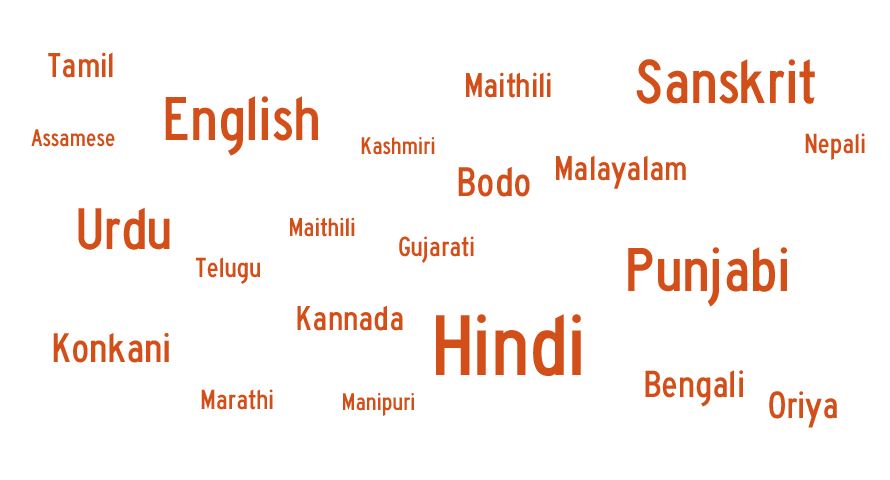 Although Hindi and English are the major languages in India, there are 22 official languages and countless other dialects. Apart from producing numerous masterpieces of literature, India has taken rapid strides for promoting all branches of education. Right from ancient times, India has enjoyed the unquestioned reputation of being the centre of excellence in education.
Although Hindi and English are the major languages in India, there are 22 official languages and countless other dialects. Apart from producing numerous masterpieces of literature, India has taken rapid strides for promoting all branches of education. Right from ancient times, India has enjoyed the unquestioned reputation of being the centre of excellence in education.
In the past, the Takshila University flourished in the northwest and Nalanda University in the east of India. The tradition of quality education is carried forward by modern Indian universities such as Delhi University (DU), Jawaharlal Nehru University (JNU), Banaras Hindu University (BHU), Aligarh Muslim University (AMU) Jamia Millia University, Allahabad University, Visva-Bharati University and Vanasthali Vidya Peeth, to name a few. More...
Spiritual India The spirit of India has fascinated the world with its very mystique. Spiritual India, rich in holy places, traditions and beliefs, offers much for those seeking knowledge and awareness of the inner world.
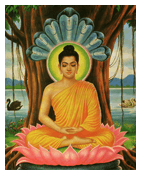
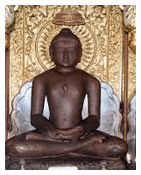
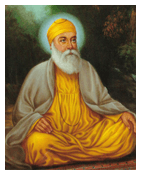 Indians engage themselves in spiritual pursuits to strike a balance between the needs of the body and of the soul. India has always been a votary of peace and non-violence as exemplified by the teachings of Buddha, Mahavira, Guru Nanak of Mahatma Gandhi in the recent past.
Indians engage themselves in spiritual pursuits to strike a balance between the needs of the body and of the soul. India has always been a votary of peace and non-violence as exemplified by the teachings of Buddha, Mahavira, Guru Nanak of Mahatma Gandhi in the recent past.
In India, spirituality is part of everyday life. While religion is more about rituals, spirituality is more to do with one's self, or the spirit. To understand Indian spirituality, it is essential to understand the basic tenets of Hinduism.
A rich, complex and deeply symbolic religion, Hinduism is called Sanatana Dharma or the eternal truth, tradition or religion. It is the world's oldest religion or rather a way of life.
Arts (Handicrafts, Paintings, Music, Dances, Cuisine, Films) The birthplace of great epics – Mahabharata and Ramayana – India has a veritable wealth of literature including the fascinating stories of the Panchtantra; Raghuvamsha, Shakuntala, Meghaduuta, written by Kālidāsa; Pāṇini's Ashtadhyayi which standardised the grammar and phonetics of Classical Sanskrit; Chanakya's Arthashastra ( a treatise on statecraft, economic policy and military strategy) and Vatsyayana's magnum opus on the art of love-making - Kamasutra.; Geeta Govinda by Jayadeva and the famous Akbar-Birbal stories.
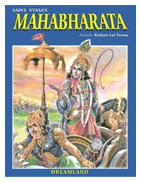
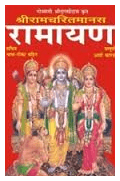
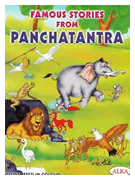
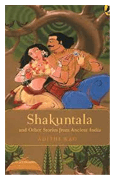
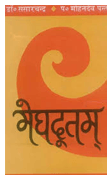
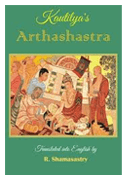
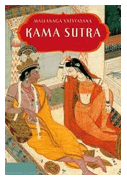 Lord Krishna love for Radha has been the inspiration for miniature painters of the Kangra or Pahari school of Painting, as also for the elaborate style of painting embellished with gold, known as the Tanjore styles from South India.
Lord Krishna love for Radha has been the inspiration for miniature painters of the Kangra or Pahari school of Painting, as also for the elaborate style of painting embellished with gold, known as the Tanjore styles from South India.
In ancient India, kitchen was considered like a place of worship where the fire God resided and nourished the whole family. The exotic Indian cuisine has never failed to attract natives as well as foreigners, perhaps for the reason that India has an unending variety of Indian recipes known for their unique flavour.
Contrary to the popular perception, in traditional India, girls were placed under the guidance of learned Gurus, where, along with various s, they were also made to learn and practise varied forms of Indian music and dance to develop their artistic skills. Especially after marriage, Indian women were supposed to wear intricate Indian jewellery, which is considered an auspicious symbol for their marital happiness.
Before Independence, many village crafts languished as the British implemented the policy of lop-sided industrialisation. Post-Independence, there is a definite revival in general of traditions and of craft traditions, in particular. Crafts are an intrinsic part of the religious and ritual traditions as craftsmen often worked for the temples and for providing the appurtenances necessary for worship.
In the modern context, India occupies a special place as the home to Bollywood, one of the largest film industries around the world which represents a unique cultural identity of the nation. Indian movies have been making waves across the world, besides doing well within the country. An expansion of commercial cinema and a number of cross-over Indian movies have created a global craze for Indian actors and superstars. The emergence of a whole new generation of Indian models in the India fashion industry has also made a great impact on the global media. Indian talents have showcased their potential by winning a number of international beauty pageants.

In the past, the Takshila University flourished in the northwest and Nalanda University in the east of India. The tradition of quality education is carried forward by modern Indian universities such as Delhi University (DU), Jawaharlal Nehru University (JNU), Banaras Hindu University (BHU), Aligarh Muslim University (AMU) Jamia Millia University, Allahabad University, Visva-Bharati University and Vanasthali Vidya Peeth, to name a few. More...
Spiritual India The spirit of India has fascinated the world with its very mystique. Spiritual India, rich in holy places, traditions and beliefs, offers much for those seeking knowledge and awareness of the inner world.



In India, spirituality is part of everyday life. While religion is more about rituals, spirituality is more to do with one's self, or the spirit. To understand Indian spirituality, it is essential to understand the basic tenets of Hinduism.
A rich, complex and deeply symbolic religion, Hinduism is called Sanatana Dharma or the eternal truth, tradition or religion. It is the world's oldest religion or rather a way of life.
Arts (Handicrafts, Paintings, Music, Dances, Cuisine, Films) The birthplace of great epics – Mahabharata and Ramayana – India has a veritable wealth of literature including the fascinating stories of the Panchtantra; Raghuvamsha, Shakuntala, Meghaduuta, written by Kālidāsa; Pāṇini's Ashtadhyayi which standardised the grammar and phonetics of Classical Sanskrit; Chanakya's Arthashastra ( a treatise on statecraft, economic policy and military strategy) and Vatsyayana's magnum opus on the art of love-making - Kamasutra.; Geeta Govinda by Jayadeva and the famous Akbar-Birbal stories.







In ancient India, kitchen was considered like a place of worship where the fire God resided and nourished the whole family. The exotic Indian cuisine has never failed to attract natives as well as foreigners, perhaps for the reason that India has an unending variety of Indian recipes known for their unique flavour.
Contrary to the popular perception, in traditional India, girls were placed under the guidance of learned Gurus, where, along with various s, they were also made to learn and practise varied forms of Indian music and dance to develop their artistic skills. Especially after marriage, Indian women were supposed to wear intricate Indian jewellery, which is considered an auspicious symbol for their marital happiness.
Before Independence, many village crafts languished as the British implemented the policy of lop-sided industrialisation. Post-Independence, there is a definite revival in general of traditions and of craft traditions, in particular. Crafts are an intrinsic part of the religious and ritual traditions as craftsmen often worked for the temples and for providing the appurtenances necessary for worship.
In the modern context, India occupies a special place as the home to Bollywood, one of the largest film industries around the world which represents a unique cultural identity of the nation. Indian movies have been making waves across the world, besides doing well within the country. An expansion of commercial cinema and a number of cross-over Indian movies have created a global craze for Indian actors and superstars. The emergence of a whole new generation of Indian models in the India fashion industry has also made a great impact on the global media. Indian talents have showcased their potential by winning a number of international beauty pageants.
Governance
India, the world's largest democracy, has made tremendous strides in economic and social development in the past two decades. The country aims to become a higher middle-income country by 2025 and that calls for even faster growth in the years to come. With new government in place this year, India currently stands at the threshold of a unique opportunity regarding governance reforms.
 Governance is central to equitable socio-economic progress and political legitimacy. Good governance runs on four wheels: a representative and accountable government; a political system that derives legitimacy from participatory democracy; durable and solid institutions and equitable socio-economic growth.
Governance is central to equitable socio-economic progress and political legitimacy. Good governance runs on four wheels: a representative and accountable government; a political system that derives legitimacy from participatory democracy; durable and solid institutions and equitable socio-economic growth.
Governance in India has always been a critical issue for the governments since independence. Neither the soviet style socialist path nor the free-market western capitalist economy appeared the best answer for the country. It strives to craft a unique blend of its own socio-economic policies that would leverage its unique strengths and catapult it to centre-stage of the global economy. In order to achieve this goal, Prime Minister Narenda Modi has given the slogan,
“minimum government, maximum governance.”
Government service delivery system in India remains chaotic and a lot needs to be done in this regard. Government machineries at all level need to be strengthened. But mindset is changing as the government at the Centre has made it clear not only to its own wings but even to States that this chaos has to go with better use of information and communication technology. Some of the organisations have successfully transformed their way of functioning and service delivery system with the help of modern technology.
The quality and effectiveness of service delivery today is directly linked to good governance practices and use of modern technology, especially ICT. It is widely accepted that governance should be citizen-centric and we need alertness and responsiveness in every aspect of governance. Modern technology is increasingly in demand at the government departments and organisations across the country, either due to the increasing pressure from the public or on the initiatives of bureaucrats and elected representatives.
Corruption and sustainable economic development are key problems in India. But, as a vibrant democracy, India has a distinct advantage as it has an accountable government that is subject to transparent surveillance on multiple fronts, democratically elected legislatures, an independent judiciary and evolving regulatory watchdogs. That is India's inherent strength. The Right to Information Bill was passed in 2005 in an effort to improve governance and public administration and eliminate corruption. This Act widely known as ‘RTI' accords all citizens greater access to public documents than was earlier possible. Further, corruption investigations have increased significantly in many states and generally, there is fear among ‘corrupt' and ‘powerful' with regard to law.

Governance in India has always been a critical issue for the governments since independence. Neither the soviet style socialist path nor the free-market western capitalist economy appeared the best answer for the country. It strives to craft a unique blend of its own socio-economic policies that would leverage its unique strengths and catapult it to centre-stage of the global economy. In order to achieve this goal, Prime Minister Narenda Modi has given the slogan,
“minimum government, maximum governance.”
Government service delivery system in India remains chaotic and a lot needs to be done in this regard. Government machineries at all level need to be strengthened. But mindset is changing as the government at the Centre has made it clear not only to its own wings but even to States that this chaos has to go with better use of information and communication technology. Some of the organisations have successfully transformed their way of functioning and service delivery system with the help of modern technology.
The quality and effectiveness of service delivery today is directly linked to good governance practices and use of modern technology, especially ICT. It is widely accepted that governance should be citizen-centric and we need alertness and responsiveness in every aspect of governance. Modern technology is increasingly in demand at the government departments and organisations across the country, either due to the increasing pressure from the public or on the initiatives of bureaucrats and elected representatives.
Corruption and sustainable economic development are key problems in India. But, as a vibrant democracy, India has a distinct advantage as it has an accountable government that is subject to transparent surveillance on multiple fronts, democratically elected legislatures, an independent judiciary and evolving regulatory watchdogs. That is India's inherent strength. The Right to Information Bill was passed in 2005 in an effort to improve governance and public administration and eliminate corruption. This Act widely known as ‘RTI' accords all citizens greater access to public documents than was earlier possible. Further, corruption investigations have increased significantly in many states and generally, there is fear among ‘corrupt' and ‘powerful' with regard to law.
Devolution of power aimed at better governance
With amendments in Constitutions through the 73rd and 74th Amendments, powers were transferred to Panchayati Raj Institutions (PRIs) and Local Bodies. By transferring functions, fund and functionaries (3Fs), efforts are being made to transform the lives of people. Increased financial autonomy was supposed to be the game changer but we are still far behind from our cherished goals. Administration at various levels is still weak and the poor still suffer the most. Accountability, access to information, political will for real devolution of powers at all levels would only make the desired change and would lead to good governance.
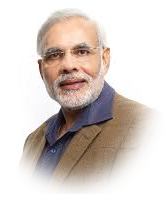 Prime Minister Narendra Modi says, "one of the biggest benefits of good governance is that it does not look at welfare of any particular section of the people; it results in welfare of all. For example, if you improve water supply, everyone benefits.”
Prime Minister Narendra Modi says, "one of the biggest benefits of good governance is that it does not look at welfare of any particular section of the people; it results in welfare of all. For example, if you improve water supply, everyone benefits.”
Modi government has thus adopted the mantra of inclusive development – 'Sabka Saath Sabka Vikas'
E-governance has a major role to play in the efforts to establish good governance. Technology and innovation are the backbone of governance. Technology also plays a large role in creating and maintaining transparency.
Reducing public expenditure is yet another critical area. The government spends huge amount wages, pensions, interest payments, and agricultural subsidies and social sector schemes. Good governance calls for drastic reduction in wasteful public expenditure. Rational and inclusive growth oriented expenditure would lead us to a higher stage of advancement.
A long-established legal system has given India the underpinnings necessary for free enterprise to flourish. Although India's courts are notoriously inefficient, they at least comprise a functioning independent judiciary. Property rights are not fully secure, but the rule of law generally prevails.
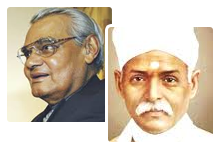 High and inclusive growth is entwined with good governance and the Modi government is making efforts to take to it to the next level., the Union human resource development ministry wants to celebrate December 25 as 'good governance day', as on this day fall the birthdays of former Prime Minister Atal Bihari Vajpayee and Hindu Mahasabha leader Madan Mohan Malviya. Good leadership is the basic ingredient of governance. Quality leadership must be available at every level.
High and inclusive growth is entwined with good governance and the Modi government is making efforts to take to it to the next level., the Union human resource development ministry wants to celebrate December 25 as 'good governance day', as on this day fall the birthdays of former Prime Minister Atal Bihari Vajpayee and Hindu Mahasabha leader Madan Mohan Malviya. Good leadership is the basic ingredient of governance. Quality leadership must be available at every level.
 Modi says, “The government cannot run merely on dreams. The government must be policy-driven. If governance is policy driven, those who have to execute those policies will be clear in their mind as to their functions, and responsibility and accountability will follow. When decisions are taken, the nation moves forward.”
Modi says, “The government cannot run merely on dreams. The government must be policy-driven. If governance is policy driven, those who have to execute those policies will be clear in their mind as to their functions, and responsibility and accountability will follow. When decisions are taken, the nation moves forward.”

Modi government has thus adopted the mantra of inclusive development – 'Sabka Saath Sabka Vikas'
E-governance has a major role to play in the efforts to establish good governance. Technology and innovation are the backbone of governance. Technology also plays a large role in creating and maintaining transparency.
Reducing public expenditure is yet another critical area. The government spends huge amount wages, pensions, interest payments, and agricultural subsidies and social sector schemes. Good governance calls for drastic reduction in wasteful public expenditure. Rational and inclusive growth oriented expenditure would lead us to a higher stage of advancement.
A long-established legal system has given India the underpinnings necessary for free enterprise to flourish. Although India's courts are notoriously inefficient, they at least comprise a functioning independent judiciary. Property rights are not fully secure, but the rule of law generally prevails.


India & the West
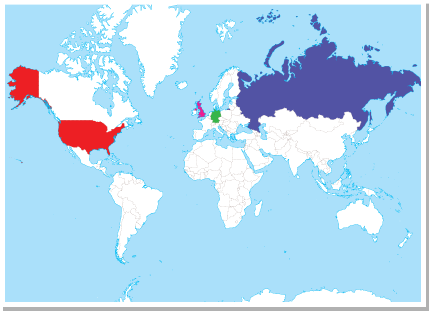 India's diplomatic and strategic engagement with the Western countries has gone through radical changes in recent times. India maintains solid bilateral relations with the United States, United Kingdom, Germany and Russia.
India's diplomatic and strategic engagement with the Western countries has gone through radical changes in recent times. India maintains solid bilateral relations with the United States, United Kingdom, Germany and Russia.
India's claim for a permanent seat in the UN Security Council, as well as more responsibility in institutions such as the International Monetary Fund (IMF) and the World Bank is much dependent on good relation with the developed West.
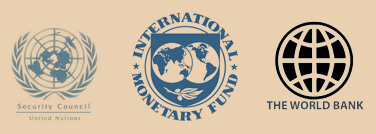 The country is maintaining a balance with regard to bilateral relations with the United States and Russia. Prime Minister Narendra Modi's historical visit to the US resulted in strengthening of trade and strategic tie-up between the two countries.
The country is maintaining a balance with regard to bilateral relations with the United States and Russia. Prime Minister Narendra Modi's historical visit to the US resulted in strengthening of trade and strategic tie-up between the two countries.
 US President Barack Obama was invited by Prime Minister Narendra Modi as the chief guest at India's Republic Day parade on 26 January 2015. He became the first US President to get that honour and also the first one to visit India twice while in office.
US President Barack Obama was invited by Prime Minister Narendra Modi as the chief guest at India's Republic Day parade on 26 January 2015. He became the first US President to get that honour and also the first one to visit India twice while in office.
 While moving closure to the US, India never undermined its old and trusted friend Russia and recently it warmly welcomed Russian President Vladimir Putin. India and Russia signed agreements in oil exploration, infrastructure, defence and nuclear energy including construction of 12 Russian-built nuclear units in India over the next two decades.
While moving closure to the US, India never undermined its old and trusted friend Russia and recently it warmly welcomed Russian President Vladimir Putin. India and Russia signed agreements in oil exploration, infrastructure, defence and nuclear energy including construction of 12 Russian-built nuclear units in India over the next two decades.

India's claim for a permanent seat in the UN Security Council, as well as more responsibility in institutions such as the International Monetary Fund (IMF) and the World Bank is much dependent on good relation with the developed West.



DEMOCRACY
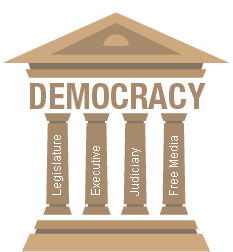 India is the world's largest democracy. It is a nuclear weapons power and has joined the elite space club. India would be the third largest economy in the world by 2050 and a middle income country by 2025. It has already become the second largest market in the world.
India is the world's largest democracy. It is a nuclear weapons power and has joined the elite space club. India would be the third largest economy in the world by 2050 and a middle income country by 2025. It has already become the second largest market in the world.
The appurtenances of democracy - adult suffrage, a free media, an independent judiciary, the rule of law, the sanctity of property rights - are essential for inclusive growth which in turn strengthens democratic institutions. Borrowed from British model of Parliamentary democracy, India has adopted best practices from every one. It is a republic where Constitution is supreme.
Elected legislature, executive, independent Judiciary and free media are four pillars of our democracy.
Democracy has given Indians an institutional framework for the exercise of political choice and freedom to express dissent. This has acted as an indispensable safety valve in an inequitable milieu with great discrepancies in the distribution of power and wealth. Democracy has given the weakest and the poorest a stake in the system. The Indian electorate now numbers more than 800 million, making Indian elections the largest organised single political activity even in human history. Democracy has proved to be the most effective instrument for the cherished pursuit of power

The appurtenances of democracy - adult suffrage, a free media, an independent judiciary, the rule of law, the sanctity of property rights - are essential for inclusive growth which in turn strengthens democratic institutions. Borrowed from British model of Parliamentary democracy, India has adopted best practices from every one. It is a republic where Constitution is supreme.
Elected legislature, executive, independent Judiciary and free media are four pillars of our democracy.
Democracy has given Indians an institutional framework for the exercise of political choice and freedom to express dissent. This has acted as an indispensable safety valve in an inequitable milieu with great discrepancies in the distribution of power and wealth. Democracy has given the weakest and the poorest a stake in the system. The Indian electorate now numbers more than 800 million, making Indian elections the largest organised single political activity even in human history. Democracy has proved to be the most effective instrument for the cherished pursuit of power
Indian laws/Judiciary
 The Indian Judicial System is one of the oldest legal systems in the world today. It is part of the inheritance India received from the British after more than 200 years of their Colonial rule, and the same is obvious from the many similarities the Indian legal system shares with the English Legal System. The frame work of the current legal system has been laid down by the Indian Constitution and the judicial system derives its powers from it. Now a debate on the need to repeal obsolete laws has been set in motion in India with the government appointing a committee to look into the matter.
The Indian Judicial System is one of the oldest legal systems in the world today. It is part of the inheritance India received from the British after more than 200 years of their Colonial rule, and the same is obvious from the many similarities the Indian legal system shares with the English Legal System. The frame work of the current legal system has been laid down by the Indian Constitution and the judicial system derives its powers from it. Now a debate on the need to repeal obsolete laws has been set in motion in India with the government appointing a committee to look into the matter.
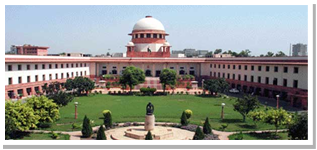 The Law Commission of India under the aegis of the Ministry of Law & Justice in India is responsible for introducing India law reforms and implementation. The first Law Commission of Independent India was constituted in 1955 by the Government of India for democratic Indian law reforms in accordance with the directives laid down by the Constitution of India. The primary objective behind setting up of the Law Commission was to introduce suitable changes in pre-Constitution laws recognized by the Constitution of India under article 372, as and when required.More...
The Law Commission of India under the aegis of the Ministry of Law & Justice in India is responsible for introducing India law reforms and implementation. The first Law Commission of Independent India was constituted in 1955 by the Government of India for democratic Indian law reforms in accordance with the directives laid down by the Constitution of India. The primary objective behind setting up of the Law Commission was to introduce suitable changes in pre-Constitution laws recognized by the Constitution of India under article 372, as and when required.More...


India of my dreams
For many, India of their dreams is a place for equal opportunities, where all the talented people are given equal opportunities for growth irrespective of their caste, gender and economic and social status. India is witnessing a jobless growth even while it is very young country with regard to workforce. One hopes that one day every youth of the country will get a job and employability would be achieved through large-scale skill development programmes.

 Women safety and empowerment is yet another dream. Lessening of economic disparity across various social strata in the country is another cherished goal.
Women safety and empowerment is yet another dream. Lessening of economic disparity across various social strata in the country is another cherished goal.
 While friendly ties with India and Pakistan as well as with India and other countries in the world become the priority for a majority, an improvement in living standards is the concern of all those who are Below Poverty Line at present.
While friendly ties with India and Pakistan as well as with India and other countries in the world become the priority for a majority, an improvement in living standards is the concern of all those who are Below Poverty Line at present.
In India, democracy can be actualised in the true sense of the term if Indian politics can do away with casteism, vote bank politics, nepotism and criminalisation. For many, this is the India of their dreams. Honest, politically free and committed bureaucracy is a dream of many, especially who are into social activism, whereas quick justice and judicial activism are seen as an end and not as means by many towards the 'India of my dreams'.



In India, democracy can be actualised in the true sense of the term if Indian politics can do away with casteism, vote bank politics, nepotism and criminalisation. For many, this is the India of their dreams. Honest, politically free and committed bureaucracy is a dream of many, especially who are into social activism, whereas quick justice and judicial activism are seen as an end and not as means by many towards the 'India of my dreams'.
Defence
Indian Defence capability is ranked 4th in the world with the 2nd largest army at its command. The President of India himself serves as the Supreme Commander of Indian Armed Forces composed of Indian Army, Indian Navy and Indian Air Force.
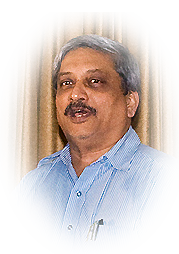 In India, defence forces have grown from strength to strength after every major armed conflict and military operation in the past 60 years. In the current geopolitical context, India is faced with a complex array of internal as well as external security threats and the Indian Armed Forces are well-equipped to deal with them. India spends huge amount to enhance its military capabilities.
In India, defence forces have grown from strength to strength after every major armed conflict and military operation in the past 60 years. In the current geopolitical context, India is faced with a complex array of internal as well as external security threats and the Indian Armed Forces are well-equipped to deal with them. India spends huge amount to enhance its military capabilities.
Former defence minister Manohar Parrikar recently told Parliament that the total expenditure on “direct payments to foreign vendors for capital acquisitions”
for the Army, Navy and IAF during the last five years stood at
Rs 1,03,535 crore ($16.72 billion).
India is the world's largest arms importer due to a stagnant defence-industrial base (DIB), which forces the armed forces to acquire 65 per cent of their requirements from abroad.
The Modi government has enhanced Foreign Direct Investment in defence sector from 26 per cent to 49 per cent and the move aims at increasing domestic production and less dependence on imports. However, defence sector needs structural reforms to increase domestic production.

Former defence minister Manohar Parrikar recently told Parliament that the total expenditure on “direct payments to foreign vendors for capital acquisitions”
for the Army, Navy and IAF during the last five years stood at
Rs 1,03,535 crore ($16.72 billion).
India is the world's largest arms importer due to a stagnant defence-industrial base (DIB), which forces the armed forces to acquire 65 per cent of their requirements from abroad.
The Modi government has enhanced Foreign Direct Investment in defence sector from 26 per cent to 49 per cent and the move aims at increasing domestic production and less dependence on imports. However, defence sector needs structural reforms to increase domestic production.
Elections
Fair and free elections are the backbone of our democracy. From Lok Sabha to local bodies, elections have become a part of our life and a strong tool for empowerment. But Lok Sabha elections 2014 was different from the previous ones in more that one ways. After a very long period (over 30 years) a single party got majority on its own. The elections were personality centric.
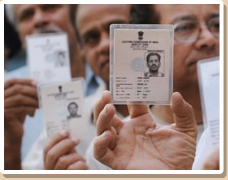 Seasoned journalist Rajdeep Sardesai's book ‘2014: The Election that Changed India' provides a perspective into how elections in India are now much more complex than the conventional tussle of ballots. The elections 2014, including some Assembly elections in states like Maharashtra and Haryana marked the unprecedented shift in poll campaign strategy and the role played by the Media & PR Network. Indeed this time, the Congress Party lost the election before it entered the electoral fray and the Modi as ‘factor' emerged there to establish a new identity.
Seasoned journalist Rajdeep Sardesai's book ‘2014: The Election that Changed India' provides a perspective into how elections in India are now much more complex than the conventional tussle of ballots. The elections 2014, including some Assembly elections in states like Maharashtra and Haryana marked the unprecedented shift in poll campaign strategy and the role played by the Media & PR Network. Indeed this time, the Congress Party lost the election before it entered the electoral fray and the Modi as ‘factor' emerged there to establish a new identity.
The elections clearly manifested that youth was no longer ready to digest the blunders done by the previous UPA regimes.More...

The elections clearly manifested that youth was no longer ready to digest the blunders done by the previous UPA regimes.More...
Politics
‘If politics decides your future, decide what your future politics should be,' goes the proverbial importance of politics. In India, Bharatiya Janata Party finally swept the entire India in its wave. The wave of ‘hope' had consumed everyone, and rightly so. States that were conventionally not the seat of power for BJP came under the umbrella with the hope of ‘acche din'. Modi assumed the mantle of power and right now, as things seem, we are seeing a rather unconventional mode of politics and governance. The year 2014 was something that triggered a series of changes in India and the trickle effect will possibly cover the entire 2015 to settle down and give a final picture. A changed political landscape would result in two important aspects in times to come. Indian politics was, since independence, dominated by vote banks politics based on religion, caste and other class factors and forces. Now ‘development' has become the catch word and youth want change, jobs not debate over Babri Mosque or any divisive issues. Smart politicians have realised the change mind set of the youth and the graffiti is on the wall!
Indian Economy
With the new government taking over this year, India seems to be back on course to getting back to the growth rates seen earlier in the best years. The international sentiment is very bullish on India and that confidence is reflected with India receiving in excess of US$ 15 billion in FII till the mid of November 2014.
 The Sensex has crossed record levels of 28,000 offering the best YTD Returns of 33.2%, after touching lows of 17,000 in September 2013 and is expected to rise even further by the end of the current fiscal. By any standard, this is indeed a smart recovery. In fact, India has been the star amongst BRICS nations in the recovery period, post the global slowdown.
The Sensex has crossed record levels of 28,000 offering the best YTD Returns of 33.2%, after touching lows of 17,000 in September 2013 and is expected to rise even further by the end of the current fiscal. By any standard, this is indeed a smart recovery. In fact, India has been the star amongst BRICS nations in the recovery period, post the global slowdown.



The agriculture and allied sectors have been erratic in growth rates and the period in question has not shown consistent growth or decline, in fact there have been sharp growth and decline in respective years.


With the new government demonstrating serious intent in reforming the economy by initiating steps towards reforms in land acquisition laws, labour laws, introducing GST, increasing FDI in Insurance, Railways, Construction, Infrastructure and Defence. Sensitive issues like deregulation of diesel have been initiated, while the coal and mining sector is being given an impetus through fresh auctions. Policies pertaining to clearances from the Environment and Forests are being revised to ensure faster clearances of projects.
The fall in global commodity prices, especially crude oil has helped India improve its Balance of Payments situation. The domestic financial investors have also shown marked improvement in sentiment with mutual funds that were net sellers in the last couple of years having turned net buyers this year. Mutual funds alone have pumped in 25,000 crore in equities this year.
The fall in global commodity prices, especially crude oil has helped India improve its Balance of Payments situation. The domestic financial investors have also shown marked improvement in sentiment with mutual funds that were net sellers in the last couple of years having turned net buyers this year. Mutual funds alone have pumped in 25,000 crore in equities this year.

GDP Growth
The Indian economy showed itself to be more robust than most of the other BRICS nations through the difficult years from 2010-2013. From 2000-2014, the economy saw its lowest GDP growth rate of 4.15% (2000-2001), 3.88% (2002-2003), 4.47% (2012-2013) and 4.74% (2013-2014). The best years saw growth rates touch 9.48% (2005-2006) and 9.57% (2006-2007). The economy has begun to recover and is expected to post growth rate above 5% for the current period of 2014-2015) and the economy is expected to continue to increase the pace of growth through 2017.
Industrial Growth
However, the industrial growth rates have shown a different trend. The highest growth rate of 12.17% was witnessed in 2006-2007, followed by 9.81% in 2004-2005 and 9.72% in 2005-2006. During the recession years, the industrial growth rate plummeted to 0.96% in 2012-2013 and 0.35% in 2013-2014. The industrial growth rate has been slow to post a recovery but current signs confirm that 2014-2015 will be better than the previous two years.The agriculture and allied sectors have been erratic in growth rates and the period in question has not shown consistent growth or decline, in fact there have been sharp growth and decline in respective years.
The year 2000-2001 saw a negative growth rate of -0.01%, while 2001-2002 showed robust recovery at 6.01%, however 2002-2003 again saw a sharp decline at -6.60%. The very next year 2003-2004 saw the best year posting 9.05% growth rate. Similarly, 2012-2013 saw growth rate dip to 1.42%, while 2013-2014 saw a recovery at 4.71%.
 Agriculture and allied sectors have seen increasing interest from corporates who now see a growth opportunity in the sector, with the government adopting a more open policy to private sector investment in modernizing the sector. With modernization and increased credit flow to the sector, growth rates are likely to continue to improve in the next few years.
Agriculture and allied sectors have seen increasing interest from corporates who now see a growth opportunity in the sector, with the government adopting a more open policy to private sector investment in modernizing the sector. With modernization and increased credit flow to the sector, growth rates are likely to continue to improve in the next few years.
 One sector which has been consistently growing at a rapid pace is the services sector. India has rapidly grown in the services sector that has seen substantial investment in financial services, insurance, IT & business process outsourcing and backend support. India is also witnessing rising investment in health services, clinical and pharmaceutical research, education and skill development. The share of the services sector in the overall economy continues to remain high. The best years witnessed 10.91% (2005-2006), 10.06% (2006-2007) and 10.27% (2007-2008) growth rates.
One sector which has been consistently growing at a rapid pace is the services sector. India has rapidly grown in the services sector that has seen substantial investment in financial services, insurance, IT & business process outsourcing and backend support. India is also witnessing rising investment in health services, clinical and pharmaceutical research, education and skill development. The share of the services sector in the overall economy continues to remain high. The best years witnessed 10.91% (2005-2006), 10.06% (2006-2007) and 10.27% (2007-2008) growth rates.
On the fiscal side, the Gross Domestic Savings touched its highest level in 2007-2008 at 36.82% of GDP and the same has been steadily declining till 2012-2013 when it touched 30.09%. 2013-2014 showed a marginal improvement at 30.50%.
The combined fiscal deficit (centre and state) had its best year in 2007-2008 when it reached -0.40% but has been rising ever since.
However, with the RBI adopting measures to curb the deficit, 2013-2014, the deficit stood at -6.7%. The inflation WPI (average) touched its highest point in 2009-2010 at 9.6 but has since been kept in check with the same being brought down to 5.9 in 2013-2014. The CPI (average) touched it's highest at 12.3 in 2009-2010 with the same coming down to 9.5 in 2013-2014.
The Rupee has been steadily weakening against the dollar and after hovering in the mid Rs 40/$ for over a decade the Rupee has been holding steady around the Rs 60/$. While the weakening of the rupee was mostly welcomed by the exporters, especially the IT sector, the same hit the industry hard that was directly or indirectly impacted by it. With the global slowdown, the economy was strained with almost all infrastructure related activities coming to a standstill in the years 2010-2014.
On international trade, the exports have been rising steadily year on year and stood at US$ 318.6 billion, while the imports had reached its highest level at US$ 502.2 billion in 2012-2013. The same had come down to US$ 466.2 billion. The forex assets, excluding gold, have been rising and stood at US$ 303.6 billion in 2013-2014. What has been worrying is that the external debt too has been steadily rising and was at its peak at US$ 426 billion with the short term debt standing at US$ 92.7 billion.
The RBI has been facing a challenge in trying to keep the Current Account Deficit (CAD) down to manageable levels. The CAD as a percentage of GDP has been at its highest at 8.6 in 2007-2008 but with tight control on imports, the same has come down to 2.6 in 2013-2014. Governor Rajan took over as Governor at RBI in 2013 under the UPA II has had to take measures to bring the economy back to a growth path. His initial steps have been to control inflation and bring down the trade deficit. The curbs on gold import helped to bring down the CAD but by later 2014-2015, the Governor is under pressure to bring down interest rates to boost investment.
According to the Census Data 2011, the population stood at 1210.2 million. The population has risen by 17.64% over the previous Census taken in 2001, when the population stood at 1028.7 million. In absolute terms, the population has risen by 181.96 million. Interestingly, the female population has registered a higher growth rate at 18.3% over the male growth rate which was at 17.1%. The children population count stood at 164.5 million which represents a rise of 660,000 over the previous Census in 2001. The male child (0-6 years) has increased between 2001 and 2011, while the female child in the same age group has decreased marginally.
The density of population per square km in India is 382 persons. Delhi recorded the highest people density amongst all cities at 97.5% with Chandigarh recording the second highest. Arunachal Pradesh had the lowest density per square km.
India is set to grow at a rapid pace from here and the power sector alone requires an investment upwards of US$250 billion over the next five years, with US$ 100 billion needed by the renewable sector alone. India is expected to have a demand of 2 trillion units by 2019.
Solar, wind and Hydro are major areas that are expected to witness major investments in a bid to shore up clean energy generation. The government is targeting 100,000 mw of clean power generation by 2022.
Gas based power projects have suffered in the last few years. In a relief to major gas based power plants the government plans to provide major relief to help revive 16,000 mw of power. Relief measures include lowering of interest rates and longer loan tenures.
Wind energy, a part of the clean energy plan of the government, has received a boost with the government planning to invite bids worth Rs 20,000 crore in the coming fiscal that will see private players add another 3,000 mw of clean energy generated from wind.
Investment in power transmission has lagged behind with several south based states suffering from power transmission congestion. The government plans to auction eight major power transmission projects with a cumulative investment of Rs 53,000 crore. One project will connect Chhattisgarh with Tamil Nadu through a 2,500 km long high capacity power evacuation link, costing Rs 26,820 crore.


On the fiscal side, the Gross Domestic Savings touched its highest level in 2007-2008 at 36.82% of GDP and the same has been steadily declining till 2012-2013 when it touched 30.09%. 2013-2014 showed a marginal improvement at 30.50%.
The combined fiscal deficit (centre and state) had its best year in 2007-2008 when it reached -0.40% but has been rising ever since.
However, with the RBI adopting measures to curb the deficit, 2013-2014, the deficit stood at -6.7%. The inflation WPI (average) touched its highest point in 2009-2010 at 9.6 but has since been kept in check with the same being brought down to 5.9 in 2013-2014. The CPI (average) touched it's highest at 12.3 in 2009-2010 with the same coming down to 9.5 in 2013-2014.
The Rupee has been steadily weakening against the dollar and after hovering in the mid Rs 40/$ for over a decade the Rupee has been holding steady around the Rs 60/$. While the weakening of the rupee was mostly welcomed by the exporters, especially the IT sector, the same hit the industry hard that was directly or indirectly impacted by it. With the global slowdown, the economy was strained with almost all infrastructure related activities coming to a standstill in the years 2010-2014.
On international trade, the exports have been rising steadily year on year and stood at US$ 318.6 billion, while the imports had reached its highest level at US$ 502.2 billion in 2012-2013. The same had come down to US$ 466.2 billion. The forex assets, excluding gold, have been rising and stood at US$ 303.6 billion in 2013-2014. What has been worrying is that the external debt too has been steadily rising and was at its peak at US$ 426 billion with the short term debt standing at US$ 92.7 billion.
The RBI has been facing a challenge in trying to keep the Current Account Deficit (CAD) down to manageable levels. The CAD as a percentage of GDP has been at its highest at 8.6 in 2007-2008 but with tight control on imports, the same has come down to 2.6 in 2013-2014. Governor Rajan took over as Governor at RBI in 2013 under the UPA II has had to take measures to bring the economy back to a growth path. His initial steps have been to control inflation and bring down the trade deficit. The curbs on gold import helped to bring down the CAD but by later 2014-2015, the Governor is under pressure to bring down interest rates to boost investment.
According to the Census Data 2011, the population stood at 1210.2 million. The population has risen by 17.64% over the previous Census taken in 2001, when the population stood at 1028.7 million. In absolute terms, the population has risen by 181.96 million. Interestingly, the female population has registered a higher growth rate at 18.3% over the male growth rate which was at 17.1%. The children population count stood at 164.5 million which represents a rise of 660,000 over the previous Census in 2001. The male child (0-6 years) has increased between 2001 and 2011, while the female child in the same age group has decreased marginally.
The density of population per square km in India is 382 persons. Delhi recorded the highest people density amongst all cities at 97.5% with Chandigarh recording the second highest. Arunachal Pradesh had the lowest density per square km.
Energy
In a path breaking initiative, The Prime Minister has taken steps to introduce a power sharing grid amongst the SAARC countries that will ensure that the surplus power generated in one country is distributed to another country based on need. The region already imports 30% of its requirement and having a grid will help all countries in the region. India already has power buying agreements with Bhutan and Bangladesh.India is set to grow at a rapid pace from here and the power sector alone requires an investment upwards of US$250 billion over the next five years, with US$ 100 billion needed by the renewable sector alone. India is expected to have a demand of 2 trillion units by 2019.
Solar, wind and Hydro are major areas that are expected to witness major investments in a bid to shore up clean energy generation. The government is targeting 100,000 mw of clean power generation by 2022.
Gas based power projects have suffered in the last few years. In a relief to major gas based power plants the government plans to provide major relief to help revive 16,000 mw of power. Relief measures include lowering of interest rates and longer loan tenures.
Wind energy, a part of the clean energy plan of the government, has received a boost with the government planning to invite bids worth Rs 20,000 crore in the coming fiscal that will see private players add another 3,000 mw of clean energy generated from wind.
Investment in power transmission has lagged behind with several south based states suffering from power transmission congestion. The government plans to auction eight major power transmission projects with a cumulative investment of Rs 53,000 crore. One project will connect Chhattisgarh with Tamil Nadu through a 2,500 km long high capacity power evacuation link, costing Rs 26,820 crore.
Railways
Reforming the Indian Railways is high on the new government's agenda. The railways has suffered from political interference and lack of adequate investment for years that has resulted in the entire infrastructure becoming strained to maintain, besides safety and efficiency standards falling to dangerous levels. The railways, on account of passenger operations, has been losing Rs 25,000 crore annually and almost all arms of the railways require a massive inflow of investment if it has to keep a pace with the growth and achieve optimum operational efficiency.
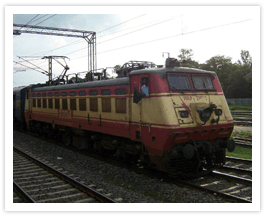 The Railway Budget for 2014-2015 has the largest budget outlay at Rs 65,445 crore. The plan outlay under budgetary sources is placed at Rs 47,650 crore which is Rs 9,383 crore higher than the previous year. Railway Safety Fund has an allocation of Rs 2,200 crore.
The Railway Budget for 2014-2015 has the largest budget outlay at Rs 65,445 crore. The plan outlay under budgetary sources is placed at Rs 47,650 crore which is Rs 9,383 crore higher than the previous year. Railway Safety Fund has an allocation of Rs 2,200 crore.
The new government has rightly identified critical areas of focus as project delivery, safety, passenger services including sanitation, cleanliness and catering, financial discipline, resource mobilization, IT initiatives, transparency & system improvements.
The central government is keen to push forward introduction of high speed railways with international funding, fare and tariff rationalization and consolidation & expansion of dedicated freight projects.
Green initiatives by the railways include utilizing station roof tops of stations, buildings and land under the railways for solar power generation to meet internal needs-to be executed under the PPP mode.

The new government has rightly identified critical areas of focus as project delivery, safety, passenger services including sanitation, cleanliness and catering, financial discipline, resource mobilization, IT initiatives, transparency & system improvements.
The central government is keen to push forward introduction of high speed railways with international funding, fare and tariff rationalization and consolidation & expansion of dedicated freight projects.
Green initiatives by the railways include utilizing station roof tops of stations, buildings and land under the railways for solar power generation to meet internal needs-to be executed under the PPP mode.
Airport modernization
The new government is keen to modernize Civil Aviation and is keen to push development of short interstate air connectivity besides making India a major aviation hub. However, the new government has not been able to take bold steps to open up the sector and is still grappling with policy issues related to privatization and operations.
 Airport modernization started under the UPA II is being further consolidated, after the new government took over this year. Six airports have been identified for modernization, of which Ahmedabad, Jaipur, Lucknow and Guwahati will be developed under PPP mode and Kolkata and Chennai will be under fee-based management contracts from private operators.
Airport modernization started under the UPA II is being further consolidated, after the new government took over this year. Six airports have been identified for modernization, of which Ahmedabad, Jaipur, Lucknow and Guwahati will be developed under PPP mode and Kolkata and Chennai will be under fee-based management contracts from private operators.
The private aviation space continues to grow at a rapid pace with aircraft acquisition continuing by all operators and new ones like Air Asia and Vistara in the process of taking advantage of the opening up of civil aviation in India.
The Directorate General of Civil Aviation has come under much criticism on account of safety downgrade by the US based FAA and this continues to remain a matter of concern, as India races ahead with expansion of its skies.

The private aviation space continues to grow at a rapid pace with aircraft acquisition continuing by all operators and new ones like Air Asia and Vistara in the process of taking advantage of the opening up of civil aviation in India.
The Directorate General of Civil Aviation has come under much criticism on account of safety downgrade by the US based FAA and this continues to remain a matter of concern, as India races ahead with expansion of its skies.
National Highways Infrastructure
The Indian road network covers over 33 lakh kms and is the second largest in the world. The roads handle 65% of the total freight and 80% of the passenger traffic. While the National Highways are just 1.7% of the total road network, they carry over 40% of the total road traffic. This reflects the growth potential for the same in India and by extension the massive investment required for the planned expansion of national and state highways.
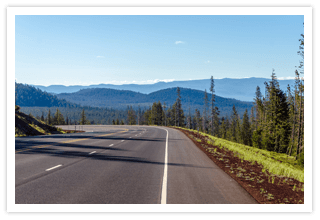 The National Highways Authority is responsible for managing a network of roads and highways that cover 92,851 kms. The UPA II faltered after initiating a massive expansion of the highways and the last few years saw various projects being stalled on account of land acquisition issues and funding.
The National Highways Authority is responsible for managing a network of roads and highways that cover 92,851 kms. The UPA II faltered after initiating a massive expansion of the highways and the last few years saw various projects being stalled on account of land acquisition issues and funding.
The new government is now taking steps to speed up the Land Acquisition Law reform to ensure that the highway expansion can get back on to the fast track mode. Amongst the policy measures undertaken to attract private sector investment has been the decision to provide capital grant of 40% of total project cost to enhance viability, on a case-to-case basis. 100% tax exemption for 5 years and 30% relief for next 5 years is offered, which may be availed of in 20 years. Concession period has been extended to 30 years.
In BOT projects, entrepreneurs will be permitted to collect and retain toll. Furthermore, the concessionaire will be permitted to import modern high capacity equipment for highway construction. The government has now decided to undertake land acquisition and utility removal prior to handing over Right of Way to the concessionaire. This has also been one of the major reasons for delay in project execution.

The new government is now taking steps to speed up the Land Acquisition Law reform to ensure that the highway expansion can get back on to the fast track mode. Amongst the policy measures undertaken to attract private sector investment has been the decision to provide capital grant of 40% of total project cost to enhance viability, on a case-to-case basis. 100% tax exemption for 5 years and 30% relief for next 5 years is offered, which may be availed of in 20 years. Concession period has been extended to 30 years.
In BOT projects, entrepreneurs will be permitted to collect and retain toll. Furthermore, the concessionaire will be permitted to import modern high capacity equipment for highway construction. The government has now decided to undertake land acquisition and utility removal prior to handing over Right of Way to the concessionaire. This has also been one of the major reasons for delay in project execution.
Coal and Mining sector
Under the UPA II, Coal mine allocation to the private sector came under legal scrutiny and the new government has scrapped the earlier allocation of 204 coal blocks out of a total allotted 218 coal blocks and has announced that the cancelled blocks will be auctioned off in a fair and transparent manner. After suffering a slowdown in coal mining operations, the mining operations are now being given a boost. In the period April-September 2014,
 Coal India Limited mined 210.75 million tons against a target of 220.10 million tons. Of this, the total coal dispatched to the power sector has been 167.59 million tons reflecting a growth of only 3.5% over the same period last year. The power sector has reached critical levels of coal stock on account of slowdown in domestic mining.
Coal India Limited mined 210.75 million tons against a target of 220.10 million tons. Of this, the total coal dispatched to the power sector has been 167.59 million tons reflecting a growth of only 3.5% over the same period last year. The power sector has reached critical levels of coal stock on account of slowdown in domestic mining.
Similarly, iron ore mining had also come under criticism and mining operations suffered a setback. In addition, with international coal and iron ore demands suffering a decline, especially on account of slackening of demand from China, the international commodity prices have been steadily declining.

Similarly, iron ore mining had also come under criticism and mining operations suffered a setback. In addition, with international coal and iron ore demands suffering a decline, especially on account of slackening of demand from China, the international commodity prices have been steadily declining.
Defence
The Defence forces continue the process of modernization in keeping with the perceived threats in the sub-continent and the Indian Ocean Region. India has had a long and hostile neighborhood that has kept the defence forces in a high state of alert.
With changing geo-political equations in the post-cold war era, new political-economic-military equations have emerged. The Defence allocation continues to remain high and the budgetary allocation for 2014-2015 is Rs 2,29,000 crore. Of this the largest share is allocated to the Army at 51.69%, Air Force 23.68%, Navy 16.51%, DG Ordinance Factories 1.08%, DG Quality Assurance 0.36%, and R&D 0.07%.
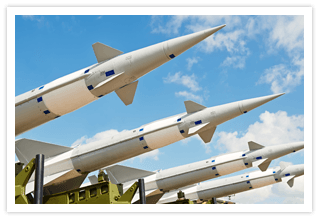 With increased Chinese activity in the North and North Eastern borders, the government has decided to raise a Strike Corp, with limited offensive capability to handle any possible threat emerging from China. The raising of the new Corps is expected to cost Rs 60,000 crore. To increase mobility in the region, the government is accelerating its border road development program across Arunachal Pradesh, Uttarakhand and J&K.
With increased Chinese activity in the North and North Eastern borders, the government has decided to raise a Strike Corp, with limited offensive capability to handle any possible threat emerging from China. The raising of the new Corps is expected to cost Rs 60,000 crore. To increase mobility in the region, the government is accelerating its border road development program across Arunachal Pradesh, Uttarakhand and J&K.
On air modernization, the government is in the process of finalizing the commercial and technical terms for the final agreement for the purchase of 126 MMRCA Raphael fighter aircraft from France. The long pending Fifth Generation Fighter Aircraft (FGFA) has faced delays on account of terms of work allocation and cost negotiation with Russia. The same is expected to be resolved by 2015.
 India continues to consider and dominate the Indian Ocean Region (IOR) and is expected to continue to play the role of safeguarding the maritime sea lanes from the Malacca Straits in the east to the Strait of Hormuz & Gulf of Aden in the west. Towards enforcing sea control, the Indian Navy strategy revolves around maintaining at least 2 Carrier Battle Groups (CBG).
India continues to consider and dominate the Indian Ocean Region (IOR) and is expected to continue to play the role of safeguarding the maritime sea lanes from the Malacca Straits in the east to the Strait of Hormuz & Gulf of Aden in the west. Towards enforcing sea control, the Indian Navy strategy revolves around maintaining at least 2 Carrier Battle Groups (CBG).
Presently, the Navy maintains a fleet of 140 vessels which includes 3 stealth warships, recently inducted. An additional 41 ships are under construction in various shipyards. To augment its sea denial capability, 6 state-of-the-art stealth submarines are in the process of being built. India has had to deal with poor planning and project execution in the submarine acquisition and building space and with the new government pushing for 'Make in India', naval arena is likely to see a lot of activity, in coming times.
The domestic defence manufacturing sector is all set to get a boost with the government raising FDI to 49% from the earlier 26%. In certain cases of high technology transfer, up to 100% FDI will be allowed. Indian companies are being encouraged to form joint ventures to ensure that the weapons and equipment with latest technology are manufactured in India along with developing Research & Development capability.
With changing geo-political equations in the post-cold war era, new political-economic-military equations have emerged. The Defence allocation continues to remain high and the budgetary allocation for 2014-2015 is Rs 2,29,000 crore. Of this the largest share is allocated to the Army at 51.69%, Air Force 23.68%, Navy 16.51%, DG Ordinance Factories 1.08%, DG Quality Assurance 0.36%, and R&D 0.07%.

On air modernization, the government is in the process of finalizing the commercial and technical terms for the final agreement for the purchase of 126 MMRCA Raphael fighter aircraft from France. The long pending Fifth Generation Fighter Aircraft (FGFA) has faced delays on account of terms of work allocation and cost negotiation with Russia. The same is expected to be resolved by 2015.

Presently, the Navy maintains a fleet of 140 vessels which includes 3 stealth warships, recently inducted. An additional 41 ships are under construction in various shipyards. To augment its sea denial capability, 6 state-of-the-art stealth submarines are in the process of being built. India has had to deal with poor planning and project execution in the submarine acquisition and building space and with the new government pushing for 'Make in India', naval arena is likely to see a lot of activity, in coming times.
The domestic defence manufacturing sector is all set to get a boost with the government raising FDI to 49% from the earlier 26%. In certain cases of high technology transfer, up to 100% FDI will be allowed. Indian companies are being encouraged to form joint ventures to ensure that the weapons and equipment with latest technology are manufactured in India along with developing Research & Development capability.
Science & Technology
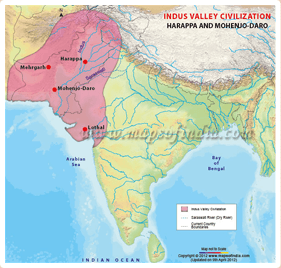 As Indian civilization is one of the ancient civilizations in the world, its history dates back to the prehistoric era and so is its science and technology. It has been found that many of the scientific inventions and discoveries which are still in practice had originated in India only. It started in a place called Mehrgarh, which is presently in Pakistan. These prehistoric human activities had been in continuation since the Indus Valley Civilization.
As Indian civilization is one of the ancient civilizations in the world, its history dates back to the prehistoric era and so is its science and technology. It has been found that many of the scientific inventions and discoveries which are still in practice had originated in India only. It started in a place called Mehrgarh, which is presently in Pakistan. These prehistoric human activities had been in continuation since the Indus Valley Civilization.
The Indus Valley Civilization which was developed around 4500 BCE was a planned settlement that knew the usage of drainage and sewerage system. Not only this, the said civilization was so developed that advanced and modern canal irrigation and water storage systems which included artificial reservoirs could also be found there. Cotton and sugarcane were also cultivated during that time.
The system of standardization, evolved by the inhabitants of the Indus Valley Civilization who used the weights and measures, allowed gauging devices to be used in measurement of construction and angular measurement very efficiently and the use of calibration was also found for measuring devices.
Lothal, the most important city of the Indus Valley Civilization, is well known for having its earliest docks. The keen observations of
today's oceanographers have proved that the Harappans were extremely knowledgeable about tides and also possessed excellent
and extraordinary knowledge on hydrograph and maritime engineering.

The Indus Valley Civilization which was developed around 4500 BCE was a planned settlement that knew the usage of drainage and sewerage system. Not only this, the said civilization was so developed that advanced and modern canal irrigation and water storage systems which included artificial reservoirs could also be found there. Cotton and sugarcane were also cultivated during that time.
The system of standardization, evolved by the inhabitants of the Indus Valley Civilization who used the weights and measures, allowed gauging devices to be used in measurement of construction and angular measurement very efficiently and the use of calibration was also found for measuring devices.
Lothal, the most important city of the Indus Valley Civilization, is well known for having its earliest docks. The keen observations of
today's oceanographers have proved that the Harappans were extremely knowledgeable about tides and also possessed excellent
and extraordinary knowledge on hydrograph and maritime engineering.

"Though not numerous, a number of map like graffiti appear among the thousands of Stone Age Indian cave paintings, and at least one complex Mesolithic diagram is believed to be a representation of the cosmos."
Use of large numbers can be found from the religious texts found in the Vedic period. From the Baudhayan Sutra written by Baudhayana (8th century BCE), we can find some notable and prominent mathematical results which include value of pi to some degrees of precision. It consists of Pythagorean theorems' general statements and also cites the formula for the square root of two.
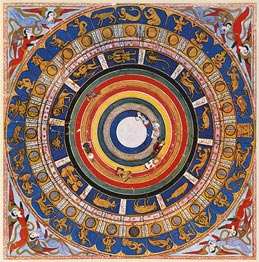
Traces of active mines of zinc can be found at Zawar near Udaipur, Rajasthan. The information about the construction of dams and bridges made of iron chain and bamboo, which was interweaved, could be traced to around 4th century.
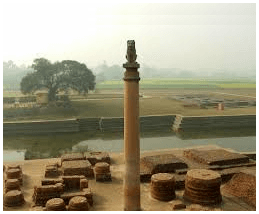
During Chandragupta II Vikramaditya's period (375–413) the iron pillar of Delhi was constructed and we can make out the magnitude of science and technology advancements of that time from the fact that it is still rust-free.
Use of the law of signs of multiplication was also evolved in India as well as Pascal Triangle, binomial coefficient and binary numbers. Zero, as any other number, was first introduced in India by 9th century BCE. Aryabhatta's elliptical model was re–evaluated by Nilkantha Somayaji of Kerala School of astronomy and mathematics in 1500.
Some notable scholars of pre independent era were Satyendra Nath Bose, Sir Jagadish Chandra Bose, Prafulla Chandra Roy, Sir CV Raman, Meghnad Saha and many more.
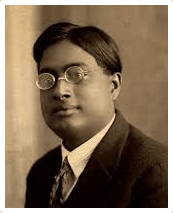
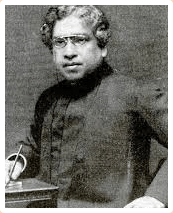
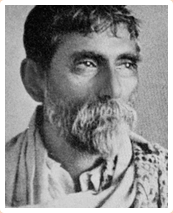
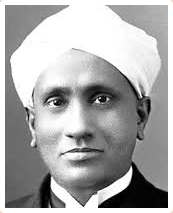
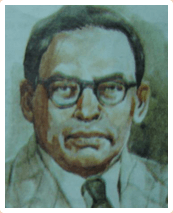
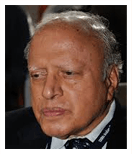
White revolution in milk production, golden revolution in horticulture, blue revolution in production of fish and the yellow revolution in oil seeds also took place other than the green revolution.
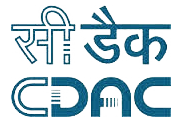
The information technology and the telecommunication sector in India have a very prominent role in India and have completely reversed its identity and picture in front of the whole world. These two sectors have established a very strategic position in the international market where India is looked upon as the hub for Information & Communication s Technology (ICT). These two sectors have gone through total liberalization and immense growth since 1990s.

For the national development, science and technology has emerged as a key instrument since India has become independent and our country has secured a very important and strategic position across the whole world.
Indian Environment
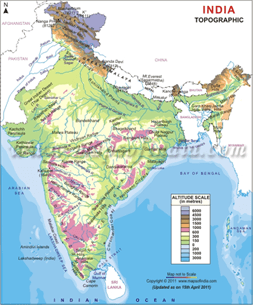 As India is a land of biodiversity, it has political boundaries which cover vast and extensive range of ecozones like high mountains, swamplands, deserts, grasslands, tropical and temperate forests, islands and rivers. The Western Ghats, The Indo–Burma region and the Himalayas are the three biodiversity hotspots of India. It is a habitat of various types of animals, both large and small, like Bengal Tiger, Indian Wolf, Asian Elephant, Water Buffalo, Golden Jackal, Bengal Fox, Indian Rhinoceros, Nilgai and many more.
As India is a land of biodiversity, it has political boundaries which cover vast and extensive range of ecozones like high mountains, swamplands, deserts, grasslands, tropical and temperate forests, islands and rivers. The Western Ghats, The Indo–Burma region and the Himalayas are the three biodiversity hotspots of India. It is a habitat of various types of animals, both large and small, like Bengal Tiger, Indian Wolf, Asian Elephant, Water Buffalo, Golden Jackal, Bengal Fox, Indian Rhinoceros, Nilgai and many more.
The geological and geographical conditions of India play a very crucial and significant role in determining the climatic pattern of the sub continent. Being the earth's highest mountain range with a gigantic stature, Himalaya acts as a barrier which protects India from the katabatic winds of icy Tibetan Plateau. Most of the parts of the country have a tropical climate as the Tropic of Cancer passes through the middle of India. The whole weather pattern and the monsoon are very much unpredictable in India. The Himalayas in the north and the Thar Desert in the northwest play a very vital role for the Indian climate which work together and break all monsoonal patterns.

The geological and geographical conditions of India play a very crucial and significant role in determining the climatic pattern of the sub continent. Being the earth's highest mountain range with a gigantic stature, Himalaya acts as a barrier which protects India from the katabatic winds of icy Tibetan Plateau. Most of the parts of the country have a tropical climate as the Tropic of Cancer passes through the middle of India. The whole weather pattern and the monsoon are very much unpredictable in India. The Himalayas in the north and the Thar Desert in the northwest play a very vital role for the Indian climate which work together and break all monsoonal patterns.
Gaming
 The gaming industry in India is an emerging industry and has been predicted that by the end of 2017 it is likely to reach Rs. 4000 crore mark. Indian gaming market has a great potential as the country has younger generation which account for more than 50 percent of its total population. The growth of this industry is very rapid as it has become very common on different platforms such as online gaming, console, mobile, social media and others. There will be a high scope for the game developers who really possess creativity and skill, as developing a game is not only a coding job. E–commerce and the gaming industry are concepts which are of recent origin. The games have been distributed to more than 200 cities through e – commerce. But to make the gaming business a huge success, there are various challenges too. The gaming industry in India can have a strategic growth if the use of internet and the digital content of different types of devices increase.
The gaming industry in India is an emerging industry and has been predicted that by the end of 2017 it is likely to reach Rs. 4000 crore mark. Indian gaming market has a great potential as the country has younger generation which account for more than 50 percent of its total population. The growth of this industry is very rapid as it has become very common on different platforms such as online gaming, console, mobile, social media and others. There will be a high scope for the game developers who really possess creativity and skill, as developing a game is not only a coding job. E–commerce and the gaming industry are concepts which are of recent origin. The games have been distributed to more than 200 cities through e – commerce. But to make the gaming business a huge success, there are various challenges too. The gaming industry in India can have a strategic growth if the use of internet and the digital content of different types of devices increase.

Research And Development
 There are innumerable numbers of research and development institutes in India where every type of research and development takes place.
There are innumerable numbers of research and development institutes in India where every type of research and development takes place.
Indian Institute of Science was founded by Jamshedji Tata in 1899 in Bangalore with swami Vivekananda's patronage for research and higher education. The institute had some notable directors like Sir JC Ghosh, Sir CV Raman and others.
India's biggest research and development organisation Council of Scientific and Industrial Research (CSIR) was established in 1942. CSIR performs various types of research and development like aerospace engineering, structural engineering, metallurgy, ocean sciences, mining, leather, life sciences, etc.
Pandit Jawaharlal Nehru established the Indian National Committee for Space Research (INCOSPAR) in 1962 which later evolved as Indian Space Research Organisation (ISRO) in 1969. Aryabhata was India's first satellite developed by ISRO. The most significant achievement of ISRO is Indian Remote Sensing System which presents data for water harnessing, agriculture, land use and land cover mapping, forestry, ocean resources survey and fold mapping. The most recent achievement was the successful insertion of Mangalyaan in Mars orbit on 24 September 2014.
The Defense Research and Development Organisation were established in 1958 for the technological advancement of defense sector. For instance, the Kaveri engine was designed especially for the Indian environment as it extends from the world's highest range of mountains to the hot deserts.

Indian Institute of Science was founded by Jamshedji Tata in 1899 in Bangalore with swami Vivekananda's patronage for research and higher education. The institute had some notable directors like Sir JC Ghosh, Sir CV Raman and others.
India's biggest research and development organisation Council of Scientific and Industrial Research (CSIR) was established in 1942. CSIR performs various types of research and development like aerospace engineering, structural engineering, metallurgy, ocean sciences, mining, leather, life sciences, etc.
Pandit Jawaharlal Nehru established the Indian National Committee for Space Research (INCOSPAR) in 1962 which later evolved as Indian Space Research Organisation (ISRO) in 1969. Aryabhata was India's first satellite developed by ISRO. The most significant achievement of ISRO is Indian Remote Sensing System which presents data for water harnessing, agriculture, land use and land cover mapping, forestry, ocean resources survey and fold mapping. The most recent achievement was the successful insertion of Mangalyaan in Mars orbit on 24 September 2014.
The Defense Research and Development Organisation were established in 1958 for the technological advancement of defense sector. For instance, the Kaveri engine was designed especially for the Indian environment as it extends from the world's highest range of mountains to the hot deserts.
India Online
 India, a geographical space to which many travellers, traders and researchers have been to, is also one among the first few countries that have marked their virtual presence on internet. India online shopping and India online music have become a way of life for net savvy people within and outside India. What's more, talented youth in India need not remain waiting for opportunities to come to them anymore. A study done by a US based company predicted that by 2016 there will be 283.8 million Indian online users. As the confidence of the online shoppers have boosted remarkably it has been predicted that the e–commerce industry in India will be a $15 billion market by 2016. With the advent of mobile banking, ATM channel and internet banking, the banking sector has got a complete transformation in their operational process. The healthcare industry has started realizing that to make their presence felt in the Indian healthcare industry, they have to compete in the online environment. Not only this industry, but every segment of Indian industry has understood the significance of having an online presence, right from the tourism and hospitality industry to the education segment. Online presence has become so vital that now people do not have to rush to ticket counters and stand in a long queue for purchasing a movie ticket or for the railway reservation bookings. They can sit at home and can book their tickets online.
India, a geographical space to which many travellers, traders and researchers have been to, is also one among the first few countries that have marked their virtual presence on internet. India online shopping and India online music have become a way of life for net savvy people within and outside India. What's more, talented youth in India need not remain waiting for opportunities to come to them anymore. A study done by a US based company predicted that by 2016 there will be 283.8 million Indian online users. As the confidence of the online shoppers have boosted remarkably it has been predicted that the e–commerce industry in India will be a $15 billion market by 2016. With the advent of mobile banking, ATM channel and internet banking, the banking sector has got a complete transformation in their operational process. The healthcare industry has started realizing that to make their presence felt in the Indian healthcare industry, they have to compete in the online environment. Not only this industry, but every segment of Indian industry has understood the significance of having an online presence, right from the tourism and hospitality industry to the education segment. Online presence has become so vital that now people do not have to rush to ticket counters and stand in a long queue for purchasing a movie ticket or for the railway reservation bookings. They can sit at home and can book their tickets online.

Indian Flights
The origins of the Indian civil aviation sector date back to the year 1932 and the credit largely goes to JRD Tata, the legendary chairman of the Tata Group. What began as a humble joint venture by the aviator Nevill Vintcent and the industrialist JRD, assumed large-scale operations by 1937 and in 1938 it was christened as Tata Airlines.
Commercial success of Tata Airlines led to the birth of Air India on 29 July 1946. Ever since, Air India has carried out yeoman's service both in the national and international arena establishing connectivity with 95 destinations around the world. Air India has a fleet of 121 aircraft. Its state- of-the-art first class completely validates the famous Indian hospitality. Combine this with the up-to-date services like mobile booking, online booking, low cost air tickets, web check-in and 24-hour help desk and Air India unfolds into an immensely attractive airline.
The introduction of Air Corporations Act 1953 led to the nationalisation of the entire Indian civil aviation sector. Thus was born Indian Airlines Corporation, the coveted domestic airline of India. With a fleet of 70 high quality aircraft, Indian Airlines coverage area includes major destinations within and outside India. With a user-friendly online booking system, Indian Airlines has always been a perfect service provider maintaining quality, efficiency and reliability all along.
Commercial success of Tata Airlines led to the birth of Air India on 29 July 1946. Ever since, Air India has carried out yeoman's service both in the national and international arena establishing connectivity with 95 destinations around the world. Air India has a fleet of 121 aircraft. Its state- of-the-art first class completely validates the famous Indian hospitality. Combine this with the up-to-date services like mobile booking, online booking, low cost air tickets, web check-in and 24-hour help desk and Air India unfolds into an immensely attractive airline.
The introduction of Air Corporations Act 1953 led to the nationalisation of the entire Indian civil aviation sector. Thus was born Indian Airlines Corporation, the coveted domestic airline of India. With a fleet of 70 high quality aircraft, Indian Airlines coverage area includes major destinations within and outside India. With a user-friendly online booking system, Indian Airlines has always been a perfect service provider maintaining quality, efficiency and reliability all along.
Indian Tourism
 The ever growing Indian tourism industry reached its pinnacle of glory in 2012 when it contributed 6.6 per cent to the country's GDP. With employment getting a major boost (supported 39.5 million jobs in 2012), today the tourism sector in India is at an all time high. Keeping its “Incredible India” campaign intact, the Ministry of Tourism plans to reach the growth figure of 7.9 per cent (average annual rate) during 2013-2023.
The ever growing Indian tourism industry reached its pinnacle of glory in 2012 when it contributed 6.6 per cent to the country's GDP. With employment getting a major boost (supported 39.5 million jobs in 2012), today the tourism sector in India is at an all time high. Keeping its “Incredible India” campaign intact, the Ministry of Tourism plans to reach the growth figure of 7.9 per cent (average annual rate) during 2013-2023.
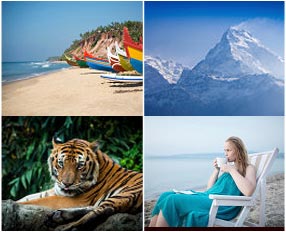 One wonders what could be the reason behind such optimistic prediction. The answer is very simple; cultural diversity, mesmerising beauty, clubbed together with a visitor-friendly attitude make India a perfect global destination for travel. There is a natural flair in Indian geography that intrinsically draws travellers to explore its infinite charm. Also, heritage sites and cultural fairs and festivals; eco tourism that offers sylvan landscapes, wildlife sanctuaries, snow-covered mountain peaks like the alluring Kanchenjunga, sun-kissed beaches like in Goa and Andamans; easy accessibility to world class hotels and resorts and many more factors make India look incredibly alluring. Another aspect that has captured the imagination of international tourists is medical tourism which is growing fast, riding on the advantage of world-class treatment facilities at low-cost available in India.
One wonders what could be the reason behind such optimistic prediction. The answer is very simple; cultural diversity, mesmerising beauty, clubbed together with a visitor-friendly attitude make India a perfect global destination for travel. There is a natural flair in Indian geography that intrinsically draws travellers to explore its infinite charm. Also, heritage sites and cultural fairs and festivals; eco tourism that offers sylvan landscapes, wildlife sanctuaries, snow-covered mountain peaks like the alluring Kanchenjunga, sun-kissed beaches like in Goa and Andamans; easy accessibility to world class hotels and resorts and many more factors make India look incredibly alluring. Another aspect that has captured the imagination of international tourists is medical tourism which is growing fast, riding on the advantage of world-class treatment facilities at low-cost available in India.
The concrete measures being taken by the Government to boost Indian tourism have manifested themselves in the manifold increase in employment and foreign exchange earnings. Therefore, it's not for nothing that India is ranked as the “best country brand for value for money” in the Country Brand Index survey conducted by a leading global brand consultancy.


The concrete measures being taken by the Government to boost Indian tourism have manifested themselves in the manifold increase in employment and foreign exchange earnings. Therefore, it's not for nothing that India is ranked as the “best country brand for value for money” in the Country Brand Index survey conducted by a leading global brand consultancy.
Indian Railways
 The beginnings of Indian railways take us to the colonial era in 1853 when the first railway was introduced that plied between Bombay and Thane. Subsequently from 1857 began the expansion of Indian Railways initiated by the then British engineer Robert Maitland Brereton. Thus, commenced the journey of railways in India, a large and robust enterprise, now owned and operated by the Indian Government.
The beginnings of Indian railways take us to the colonial era in 1853 when the first railway was introduced that plied between Bombay and Thane. Subsequently from 1857 began the expansion of Indian Railways initiated by the then British engineer Robert Maitland Brereton. Thus, commenced the journey of railways in India, a large and robust enterprise, now owned and operated by the Indian Government.
Today, Indian Railways is a crisscross representation of several zones the numbers of which has increased from six to 17 over the years. With a total track length of 115000 km, trains in India operate on the broad gauge, standard gauge, meter gauge and the narrow gauge. Trains are aplenty in India and their classification is subject to their average speed. For instance, superfast trains like the Duronto, Rajdhani and the Shatabdi express run at an average speed of 130 to 160 km/h and have much fewer halts than others. The operational area of suburban trains and metros are within the periphery of important cities like Delhi, Mumbai, Kolkata, Chennai, Hyderabad, Ahmedabad and Pune. To promote tourism, the Indian Government has designed special trains like the Palace on Wheels, whose interiors are decked with the glorious Indian artistry, meant to provide feelings of pleasure and luxury to the travellers.
of suburban trains and metros are within the periphery of important cities like Delhi, Mumbai, Kolkata, Chennai, Hyderabad, Ahmedabad and Pune. To promote tourism, the Indian Government has designed special trains like the Palace on Wheels, whose interiors are decked with the glorious Indian artistry, meant to provide feelings of pleasure and luxury to the travellers.
With its reach extending even to the remotest areas, Indian Railways has the distinction of being the lifeline of this country. Keeping in view the highly competitive nature of travel and transport sphere, the Government has embarked upon innovative measures to enhance and upgrade the operations and services of Indian Railways.More...

Today, Indian Railways is a crisscross representation of several zones the numbers of which has increased from six to 17 over the years. With a total track length of 115000 km, trains in India operate on the broad gauge, standard gauge, meter gauge and the narrow gauge. Trains are aplenty in India and their classification is subject to their average speed. For instance, superfast trains like the Duronto, Rajdhani and the Shatabdi express run at an average speed of 130 to 160 km/h and have much fewer halts than others. The operational area

With its reach extending even to the remotest areas, Indian Railways has the distinction of being the lifeline of this country. Keeping in view the highly competitive nature of travel and transport sphere, the Government has embarked upon innovative measures to enhance and upgrade the operations and services of Indian Railways.More...
Indian Embassy
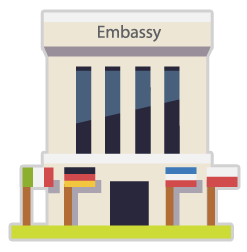 Indian embassy is the vital connect between India and rest of the world and its job is to diplomatically engage with other countries, while duly following the international law. The person responsible for mediating such a specific task is called the ambassador of the country. While dispersing his duties, the ambassador's topmost priority is to safeguard the rights and interests of the country. He works in the spirit of harmony and cordial relations, while forging closer social, , cultural, economic and defence ties with other countries. The Indian embassy functions following the above mentioned principles in the course of its interaction with other countries.
Indian embassy is the vital connect between India and rest of the world and its job is to diplomatically engage with other countries, while duly following the international law. The person responsible for mediating such a specific task is called the ambassador of the country. While dispersing his duties, the ambassador's topmost priority is to safeguard the rights and interests of the country. He works in the spirit of harmony and cordial relations, while forging closer social, , cultural, economic and defence ties with other countries. The Indian embassy functions following the above mentioned principles in the course of its interaction with other countries.
The Commonwealth countries of the world have high commissions instead of embassies and the Indian embassy makes every effort to fully cooperate with the high commissioners of these countries. Modern Indian history abounds with instances wherein India has extended diplomatic assistance to its neighbouring countries in the Central Asia, the Middle East, East Africa, Southeast Asia and the Indian Subcontinent. Diplomatic missions carried out by India in far flung areas like in the Caribbean and Pacific regions are also well known.

The Commonwealth countries of the world have high commissions instead of embassies and the Indian embassy makes every effort to fully cooperate with the high commissioners of these countries. Modern Indian history abounds with instances wherein India has extended diplomatic assistance to its neighbouring countries in the Central Asia, the Middle East, East Africa, Southeast Asia and the Indian Subcontinent. Diplomatic missions carried out by India in far flung areas like in the Caribbean and Pacific regions are also well known.
Indian Visa
 Overseas visitors desirous of visiting India must obtain a visa from the Indian embassy located abroad. However, this rule is not applicable to citizens belonging to visa-exempt countries like Nepal and Bhutan. India also offers visa on arrival facility that can be availed by ordinary passport-holders of 43 countries. The validity of this visa is 30 days for a single stay. To boost Indian tourism, the Government of India recently introduced the ETA enabled visa on arrival facility. ETA or Electronic Travel Authorisation promises to make citizens of more than 40 countries eligible for visa on arrival. This enables the ETA cardholders to immediately proceed towards the immigration counters once they reach India. To avail this benefit, tourists must apply four days in advance of their date of arrival. This visa is functional for 30 days and can be acquired twice a year.
Overseas visitors desirous of visiting India must obtain a visa from the Indian embassy located abroad. However, this rule is not applicable to citizens belonging to visa-exempt countries like Nepal and Bhutan. India also offers visa on arrival facility that can be availed by ordinary passport-holders of 43 countries. The validity of this visa is 30 days for a single stay. To boost Indian tourism, the Government of India recently introduced the ETA enabled visa on arrival facility. ETA or Electronic Travel Authorisation promises to make citizens of more than 40 countries eligible for visa on arrival. This enables the ETA cardholders to immediately proceed towards the immigration counters once they reach India. To avail this benefit, tourists must apply four days in advance of their date of arrival. This visa is functional for 30 days and can be acquired twice a year.
Those interested in obtaining an Indian visa must first complete an online application form. This process also requires one to submit a valid passport, a recent passport sized photo and details of their intended travel. The application fees for visa differ from country to country. The processing part of Indian visa applications are handled by outsourced agencies in most countries. However, very soon Indian agencies are set to replace them including those run by Travisa and VFS Global. Visiting certain remote areas in India is strictly prohibited even for valid visa holders. Foreigners, therefore, have to obtain special permission in the form of Protected Area Permit (PAP) to visit these places.

Those interested in obtaining an Indian visa must first complete an online application form. This process also requires one to submit a valid passport, a recent passport sized photo and details of their intended travel. The application fees for visa differ from country to country. The processing part of Indian visa applications are handled by outsourced agencies in most countries. However, very soon Indian agencies are set to replace them including those run by Travisa and VFS Global. Visiting certain remote areas in India is strictly prohibited even for valid visa holders. Foreigners, therefore, have to obtain special permission in the form of Protected Area Permit (PAP) to visit these places.
Indian sports
 Historically, various board and dice games that find reference in ancient Hindu texts and mythologies were popular in India. While there may not have been a mega sporting event like the Greek Olympics, competitions in wrestling and archery as entertainment for royal families were not uncommon in ancient and medieval India. Also, thanks to the great body of work in yoga and ayurveda as well as various dance forms, physical well-being was seen as an integral part of overall well-being.
Historically, various board and dice games that find reference in ancient Hindu texts and mythologies were popular in India. While there may not have been a mega sporting event like the Greek Olympics, competitions in wrestling and archery as entertainment for royal families were not uncommon in ancient and medieval India. Also, thanks to the great body of work in yoga and ayurveda as well as various dance forms, physical well-being was seen as an integral part of overall well-being.
With the coming of the British, sports like other parts of life became an organized activity, and modern sports such as cricket, badminton, lawn tennis and hockey were introduced in the subcontinent.




It's a quirk of history that a white man's game — cricket — became not only India's most popular sport, but also its great obsession. As social scientist Ashis Nandy has cheekily remarked, "Cricket is an Indian game invented by the British."
Sports got a major fillip right after independence when Delhi hosted the first ever Asian Games in 1951. Six sports were featured in the games — athletics, basketball, weightlifting, football, cycling and aquatics. India stood second in the medal tally with 15 gold medals.
By the time India hosted the Asian Games again in 1982, sports in India had taken off, and the event featured more than 190 events in 21 sports along with 23 disciplines. However, compared to Asian sporting giants such as China, Japan and South Korea, India has lagged behind in sports in recent years; the medal tally of recent Asiads brings this out sharply.
India has been most successful in Olympics in field hockey, with the men's team winning eight gold medals in its glorious years. More recently, Indian archers, shooters, wrestlers, boxers and shuttlers have found success in the international arena. Though cricket continues to remain the most popular sport, sporting heroes such as Leander Paes and Sania Mirza in tennis, Saina Nehwal in badminton and Abhinav Bindra in shooting have made budding sportsmen and women more confident about pursing varied disciplines.

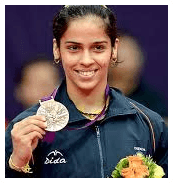
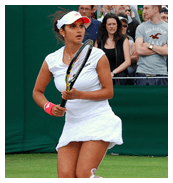
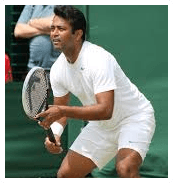 Also, cricket no longer commands the absolute devotion that it once did in the 1980s and 1990s. India's world cup cricket triumph of 1984 remains one of the finest sporting moments in the collective imagination of millions of Indians.
Also, cricket no longer commands the absolute devotion that it once did in the 1980s and 1990s. India's world cup cricket triumph of 1984 remains one of the finest sporting moments in the collective imagination of millions of Indians.
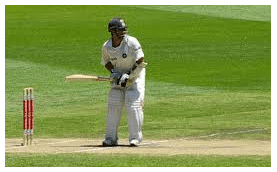 Cricketers of every generation have been household names. But one man, Sachin Ramesh Tendulkar, rose to such supreme heights of fame and popularity that it is hard to imagine anyone in the future replacing his place. It's not as if there won't be great champions in Indian sports, but the Tendulkar era coincided with the opening up of the Indian economy, a reassertion of Indian nationalism, and the proliferation of television and other mass media, creating a unique, near-divine aura around the batting legend for his millions of fans.
Cricketers of every generation have been household names. But one man, Sachin Ramesh Tendulkar, rose to such supreme heights of fame and popularity that it is hard to imagine anyone in the future replacing his place. It's not as if there won't be great champions in Indian sports, but the Tendulkar era coincided with the opening up of the Indian economy, a reassertion of Indian nationalism, and the proliferation of television and other mass media, creating a unique, near-divine aura around the batting legend for his millions of fans.
India has hosted several key cricket tournaments including the cricket world cup in 1987, 1996 and 2011.
With the private sector getting more closely involved with sports and state government such as Haryana investing in sports in a significant way, the future looks promising. India has done particularly well in billiards and chess. Michael Ferreira, Geet Sethi and Pankaj Advani have brought several laurels for the country in the international arena. Viswanathan Anand has been the face of India's success in chess for more than two decades. A new generation of sportspersons from states like Haryana and Manipur are leading India's charge in the Olympics and elsewhere.
Meanwhile, sports and events such as marathons, half-marathons, motor sports and adventure sports are gaining a committed band of followers in a globalizing India. Marathons are popular events in many cities now, with celebrities joining in to promote a social cause. More...

With the coming of the British, sports like other parts of life became an organized activity, and modern sports such as cricket, badminton, lawn tennis and hockey were introduced in the subcontinent.




It's a quirk of history that a white man's game — cricket — became not only India's most popular sport, but also its great obsession. As social scientist Ashis Nandy has cheekily remarked, "Cricket is an Indian game invented by the British."
Sports got a major fillip right after independence when Delhi hosted the first ever Asian Games in 1951. Six sports were featured in the games — athletics, basketball, weightlifting, football, cycling and aquatics. India stood second in the medal tally with 15 gold medals.
By the time India hosted the Asian Games again in 1982, sports in India had taken off, and the event featured more than 190 events in 21 sports along with 23 disciplines. However, compared to Asian sporting giants such as China, Japan and South Korea, India has lagged behind in sports in recent years; the medal tally of recent Asiads brings this out sharply.
India has been most successful in Olympics in field hockey, with the men's team winning eight gold medals in its glorious years. More recently, Indian archers, shooters, wrestlers, boxers and shuttlers have found success in the international arena. Though cricket continues to remain the most popular sport, sporting heroes such as Leander Paes and Sania Mirza in tennis, Saina Nehwal in badminton and Abhinav Bindra in shooting have made budding sportsmen and women more confident about pursing varied disciplines.





India has hosted several key cricket tournaments including the cricket world cup in 1987, 1996 and 2011.
With the private sector getting more closely involved with sports and state government such as Haryana investing in sports in a significant way, the future looks promising. India has done particularly well in billiards and chess. Michael Ferreira, Geet Sethi and Pankaj Advani have brought several laurels for the country in the international arena. Viswanathan Anand has been the face of India's success in chess for more than two decades. A new generation of sportspersons from states like Haryana and Manipur are leading India's charge in the Olympics and elsewhere.
Meanwhile, sports and events such as marathons, half-marathons, motor sports and adventure sports are gaining a committed band of followers in a globalizing India. Marathons are popular events in many cities now, with celebrities joining in to promote a social cause. More...
Cricket

Cricket has rightly been described as a religion in India. Before the 1990s, Indian cricketers, though admired and lauded, were paid very meager amounts as salary. That changed with the opening up of the economy. Today Indian national team cricketers are multimillionaires, rubbing shoulders with Bollywood stars and endorsing multiple brands.
In the first four decades after independence, cricket was still similar to the old colonial sport, and synonymous with Test cricket. It was a game spread over five days, with a one-day break in the middle, and followed on radio and in newspapers. It was played in whites and the great urban centers such as Bombay produced most of the cricketers.
The average Indian cricketer of today is likely to come as much from a small town as from a big city. One day cricket and T20 have made the sport easy to follow and a made-for-television event. Purists argue that the twenty over version of the game has eroded its soul, but as long as the money keeps coming in, nobody will take their complaints seriously. More...

Cricket has rightly been described as a religion in India. Before the 1990s, Indian cricketers, though admired and lauded, were paid very meager amounts as salary. That changed with the opening up of the economy. Today Indian national team cricketers are multimillionaires, rubbing shoulders with Bollywood stars and endorsing multiple brands.
In the first four decades after independence, cricket was still similar to the old colonial sport, and synonymous with Test cricket. It was a game spread over five days, with a one-day break in the middle, and followed on radio and in newspapers. It was played in whites and the great urban centers such as Bombay produced most of the cricketers.
The average Indian cricketer of today is likely to come as much from a small town as from a big city. One day cricket and T20 have made the sport easy to follow and a made-for-television event. Purists argue that the twenty over version of the game has eroded its soul, but as long as the money keeps coming in, nobody will take their complaints seriously. More...
Hockey

India's national sport has seen the best of times and the worst of times. In the decades before and after independence, India was a powerhouse in hockey. The names of hockey legends such as Dhyan Chand are still taken in awed reverence.
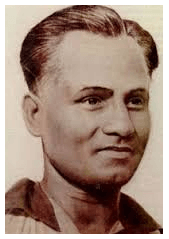
The Indian Hockey Federation was founded in 1927. The following year, India participated in Olympic hockey for the very first time in the Amsterdam Games. Captain Jaipal Singh's leadership and Dhyan Chand's wizardry helped India to a landmark gold medal.
India continued their golden ways in hockey in the next two Olympics. In the post-independence era, India clinched the gold medal in the 1948 London Olympics. India's winning streak ended in the 1960 Rome Olympics when rivals Pakistan beat them in the finals.
India made a comeback in one final burst of glory in the Moscow Olympics of 1980. The world of hockey had already started changing in the 1970s, and the subcontinent players found themselves out of touch with a faster, more aggressive style of playing. Indians also failed to adjust to the new artificial turf. Since then it's been a saga of decline, with just a few flashes of brilliance for Indian hockey. More...

India's national sport has seen the best of times and the worst of times. In the decades before and after independence, India was a powerhouse in hockey. The names of hockey legends such as Dhyan Chand are still taken in awed reverence.

The Indian Hockey Federation was founded in 1927. The following year, India participated in Olympic hockey for the very first time in the Amsterdam Games. Captain Jaipal Singh's leadership and Dhyan Chand's wizardry helped India to a landmark gold medal.
India continued their golden ways in hockey in the next two Olympics. In the post-independence era, India clinched the gold medal in the 1948 London Olympics. India's winning streak ended in the 1960 Rome Olympics when rivals Pakistan beat them in the finals.
India made a comeback in one final burst of glory in the Moscow Olympics of 1980. The world of hockey had already started changing in the 1970s, and the subcontinent players found themselves out of touch with a faster, more aggressive style of playing. Indians also failed to adjust to the new artificial turf. Since then it's been a saga of decline, with just a few flashes of brilliance for Indian hockey. More...
Football

Football is a strange phenomenon in India. India ranks nowhere in the soccer playing nations of the world, but the sport is arguably only second in popularity to cricket. Football clubs such as Mohun Bagan and East Bengal in the eastern city of Kolkata have had a fanatical fan following traditionally. Football is also quite popular in Goa, Kerala and Sikkim among other states. Many young, urban middle-class Indians enthusiastically follow the English Premier League and Champions League. People are known to reschedule their holidays and office hours during the World Cup, one of the most widely followed sporting events in the country, though nobody seriously expects India to come even close to qualifying in the near future.
Given India's near-absence from the football map of the world today, it's surprising to learn that India won the gold medal in the 1951 Asian Games; reached the semi-final in the Melbourne Olympic; and bagged another gold medal in the 1962 Asian Games.
The formation of the Indian Super League in 2014, with the likes of Nicolas Anelka and Robert Pires part of the action, promises to turn around the fortunes of Indian football. But it is too early to tell what the long-term effects of the league would be. More...

Football is a strange phenomenon in India. India ranks nowhere in the soccer playing nations of the world, but the sport is arguably only second in popularity to cricket. Football clubs such as Mohun Bagan and East Bengal in the eastern city of Kolkata have had a fanatical fan following traditionally. Football is also quite popular in Goa, Kerala and Sikkim among other states. Many young, urban middle-class Indians enthusiastically follow the English Premier League and Champions League. People are known to reschedule their holidays and office hours during the World Cup, one of the most widely followed sporting events in the country, though nobody seriously expects India to come even close to qualifying in the near future.
Given India's near-absence from the football map of the world today, it's surprising to learn that India won the gold medal in the 1951 Asian Games; reached the semi-final in the Melbourne Olympic; and bagged another gold medal in the 1962 Asian Games.
The formation of the Indian Super League in 2014, with the likes of Nicolas Anelka and Robert Pires part of the action, promises to turn around the fortunes of Indian football. But it is too early to tell what the long-term effects of the league would be. More...
Tennis

Sardar Nihal Singh was the first Indian to play at Wimbledon in 1908. Two years later he managed to reach round 3 of the championship. The other Indian and British-India players to make a mark on the world stage during the British raj include the British brothers AA Fyzee and AH Fyzee; SM Jacob; Sydney Jacob (who represented India and reached the quarter-finals of Wimbledon in 1925); and the Lahore lawyer Mohammad Sleem, who reached the pre-quarters in 1921. Ghaus Mohammad Khan was the first Indian to reach the quarters in 1939.
Post independence, Dilip Bose reached the 4th round of Wimbledon in 1948. But the first truly great Indian tennis player was Ramanathan Krishnan, a two-time Wimbledon semi-finalist in the 1960s, the farthest any Indian player has ever reached. Premjit Lall and Jaideep Mukherjea were among the other notable players of the 1960s and 1970s.
Vijay Amritraj reached the quarter-finals twice in Wimbledon, in 1973 and 1981. In 1986, Ramanathan's son Ramesh Krishnan reached the quarters of the championships.
In more recent times, India has done quite well in the mixed, men's and women's doubles in various Grand Slams, with Leander Paes, Mahesh Bhupati and Sania Mirza — the three most successful Indian tennis players of the last two decades — leading the charge. More...

Sardar Nihal Singh was the first Indian to play at Wimbledon in 1908. Two years later he managed to reach round 3 of the championship. The other Indian and British-India players to make a mark on the world stage during the British raj include the British brothers AA Fyzee and AH Fyzee; SM Jacob; Sydney Jacob (who represented India and reached the quarter-finals of Wimbledon in 1925); and the Lahore lawyer Mohammad Sleem, who reached the pre-quarters in 1921. Ghaus Mohammad Khan was the first Indian to reach the quarters in 1939.
Post independence, Dilip Bose reached the 4th round of Wimbledon in 1948. But the first truly great Indian tennis player was Ramanathan Krishnan, a two-time Wimbledon semi-finalist in the 1960s, the farthest any Indian player has ever reached. Premjit Lall and Jaideep Mukherjea were among the other notable players of the 1960s and 1970s.
Vijay Amritraj reached the quarter-finals twice in Wimbledon, in 1973 and 1981. In 1986, Ramanathan's son Ramesh Krishnan reached the quarters of the championships.
In more recent times, India has done quite well in the mixed, men's and women's doubles in various Grand Slams, with Leander Paes, Mahesh Bhupati and Sania Mirza — the three most successful Indian tennis players of the last two decades — leading the charge. More...







